1794
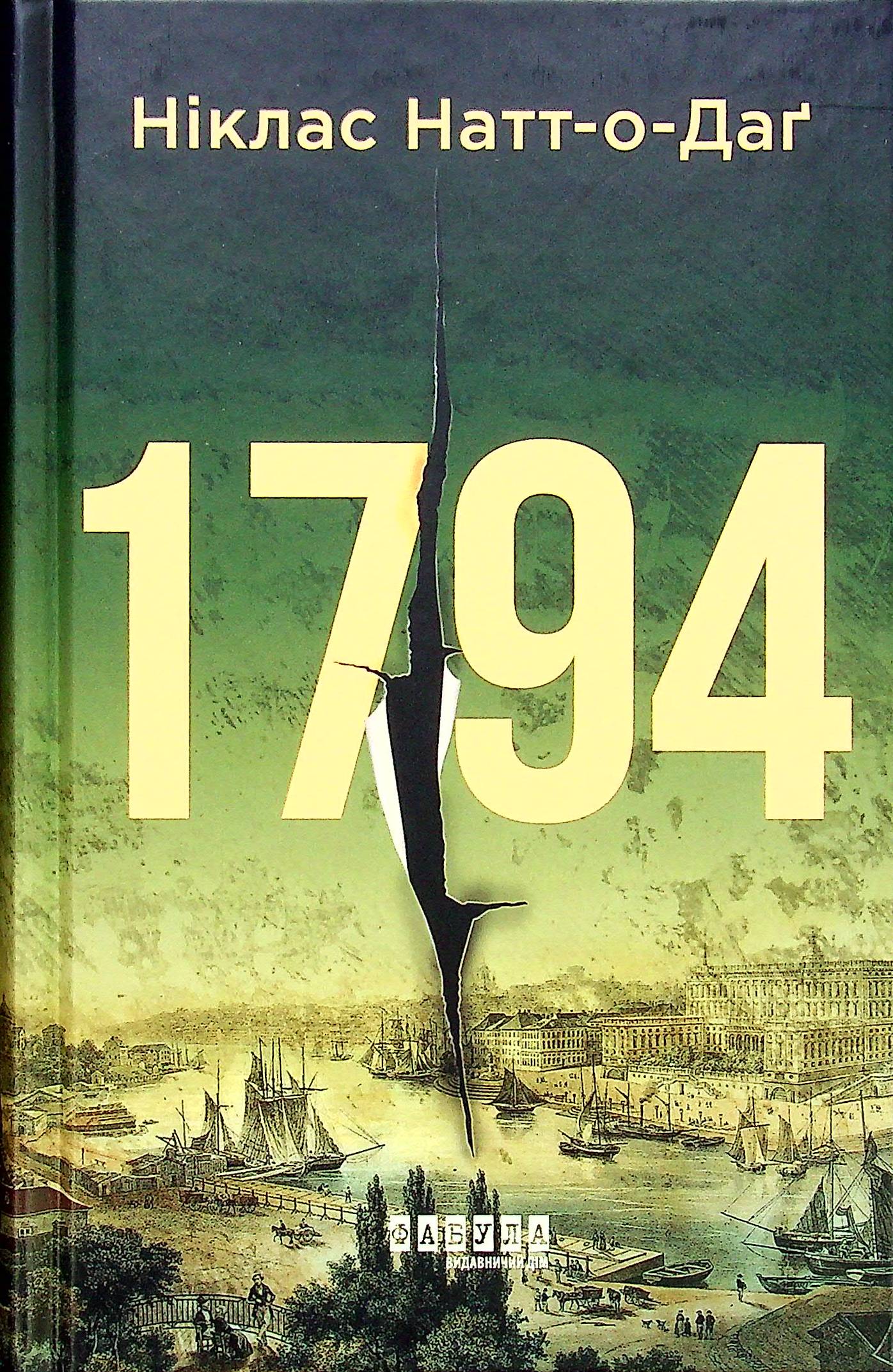
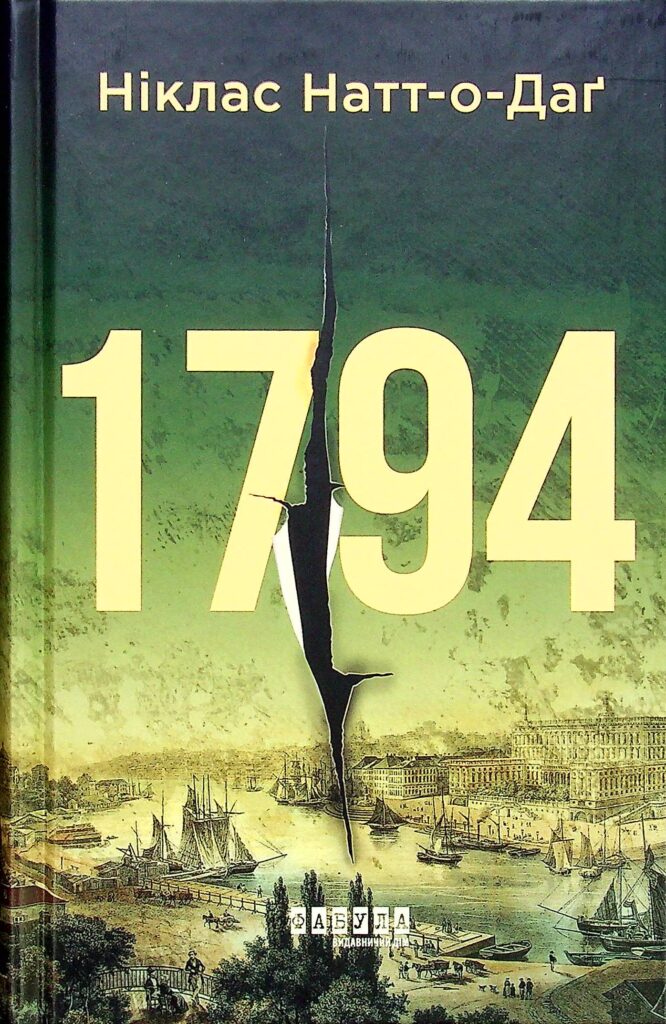

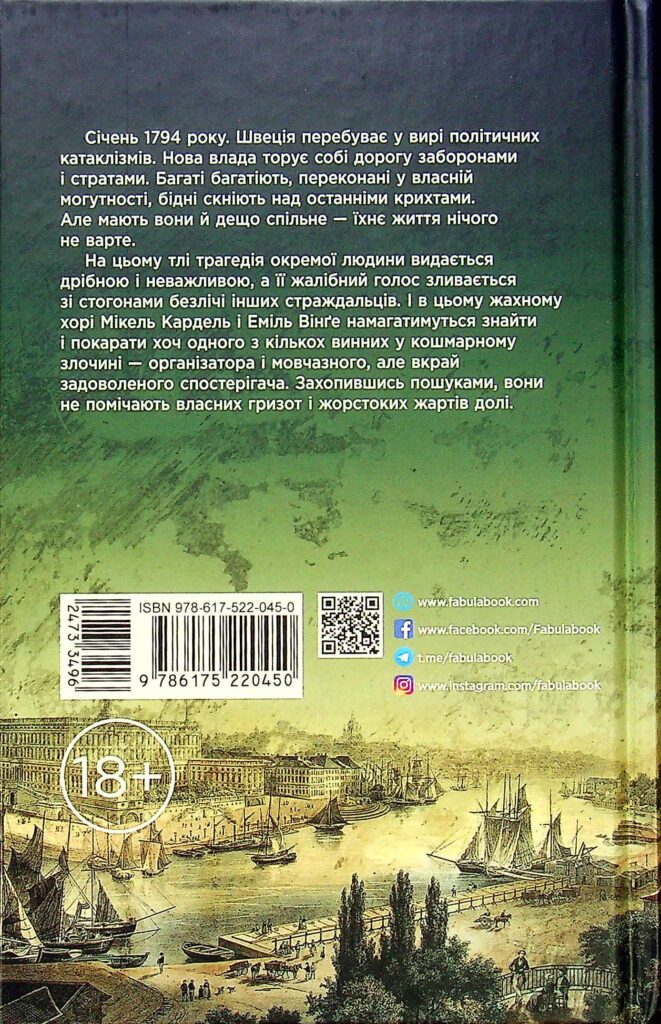
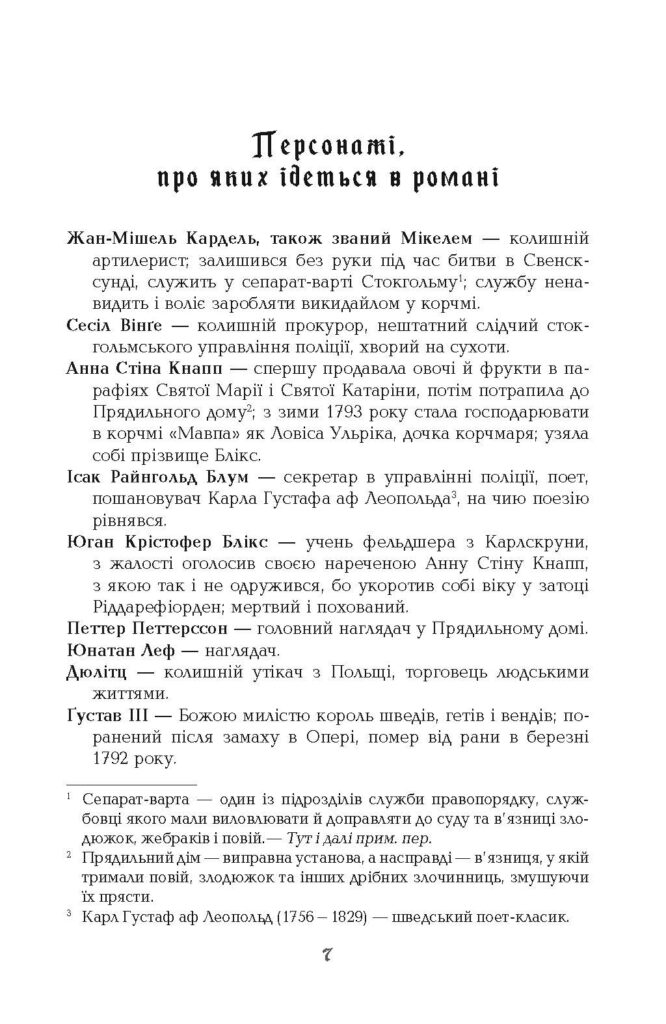
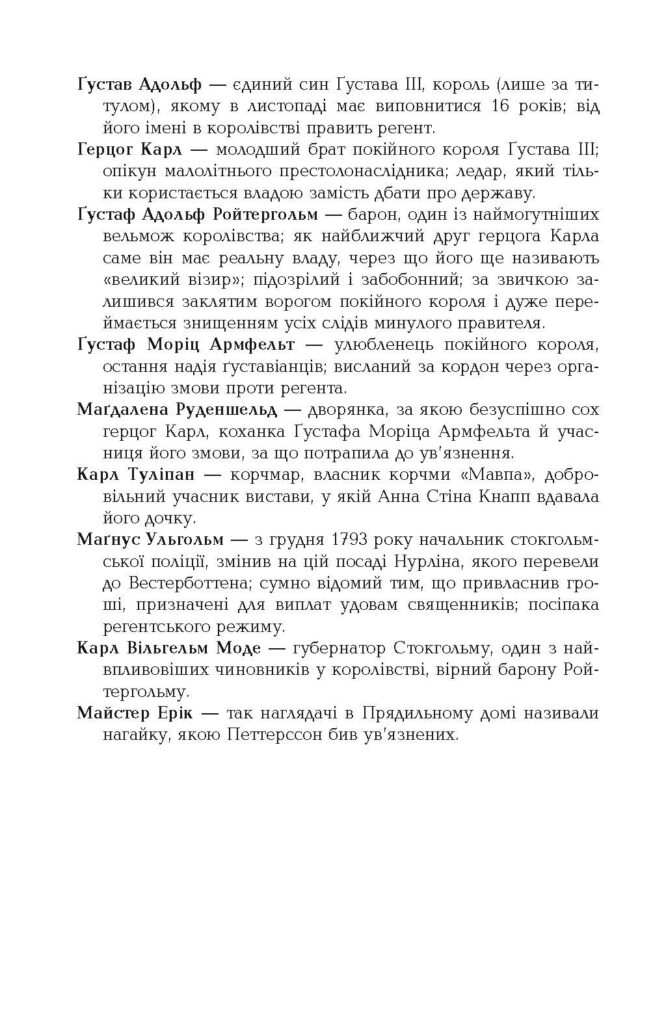
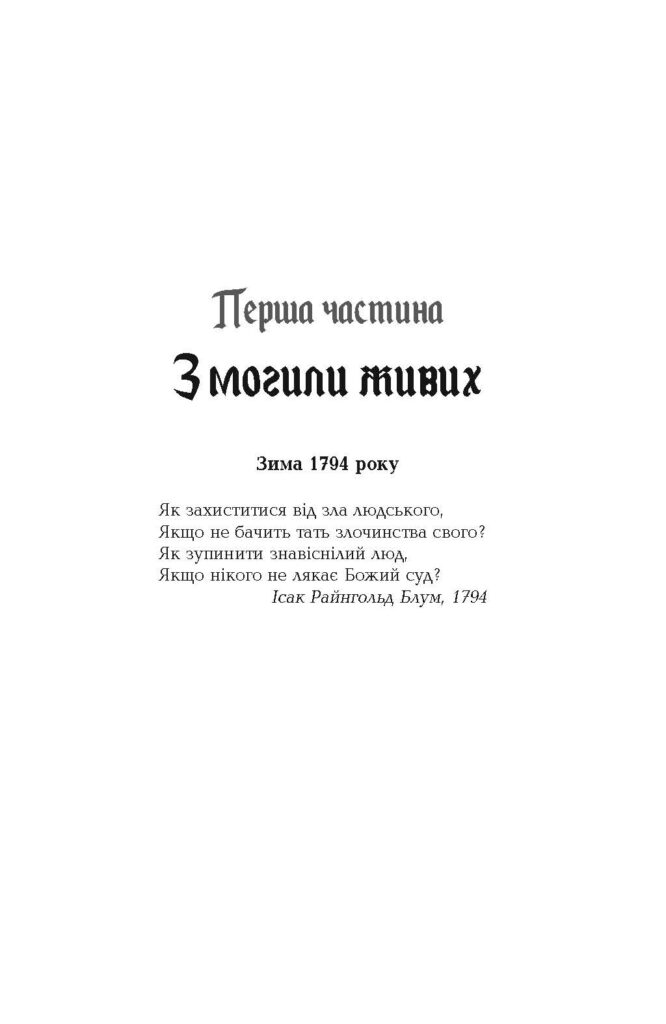
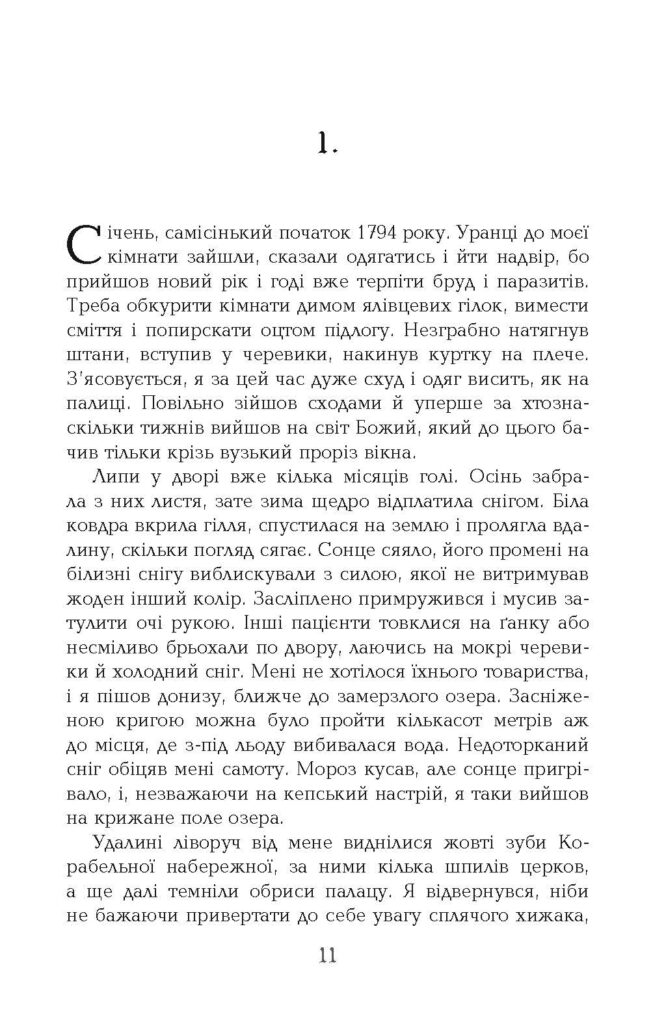
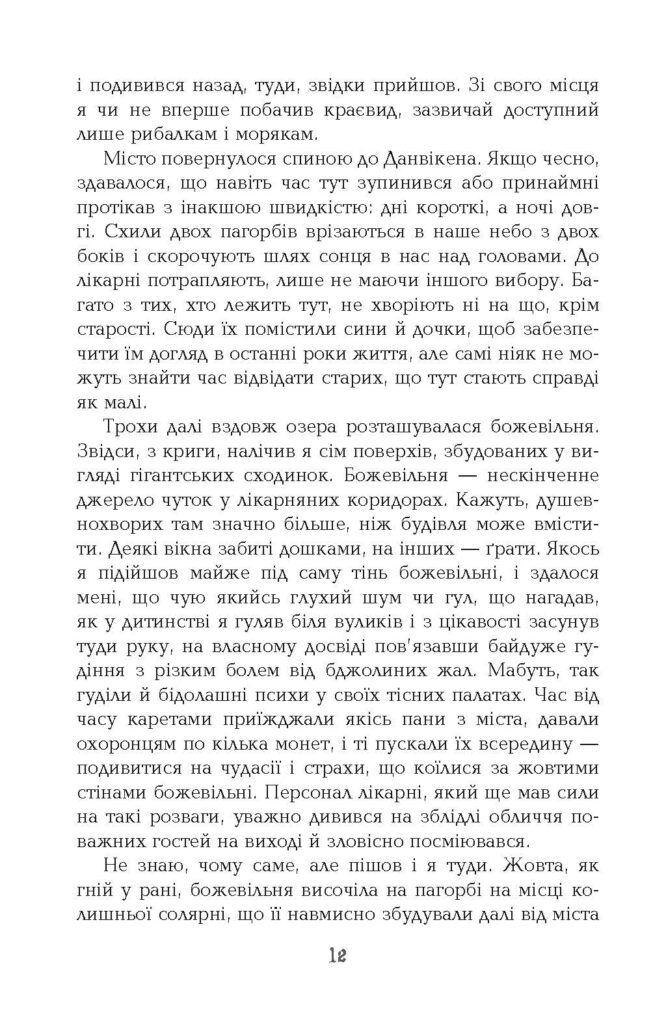
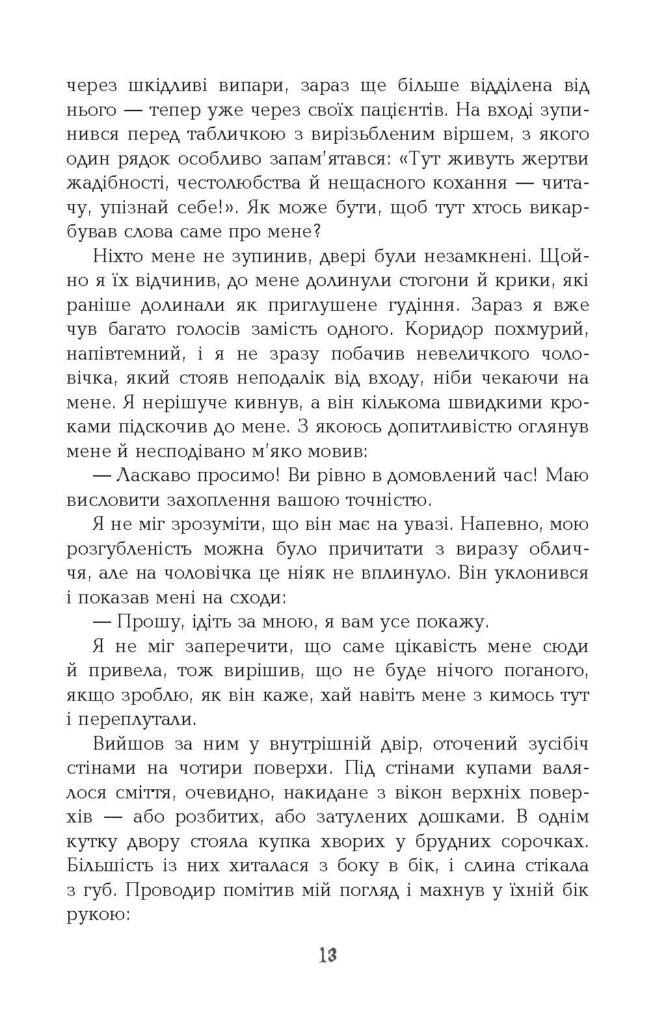
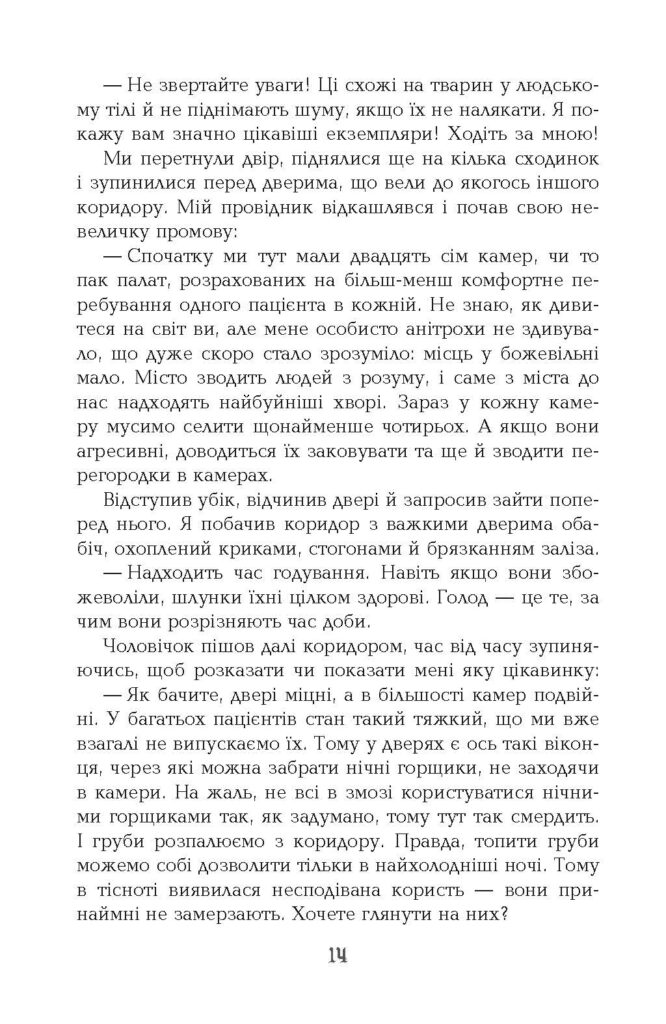
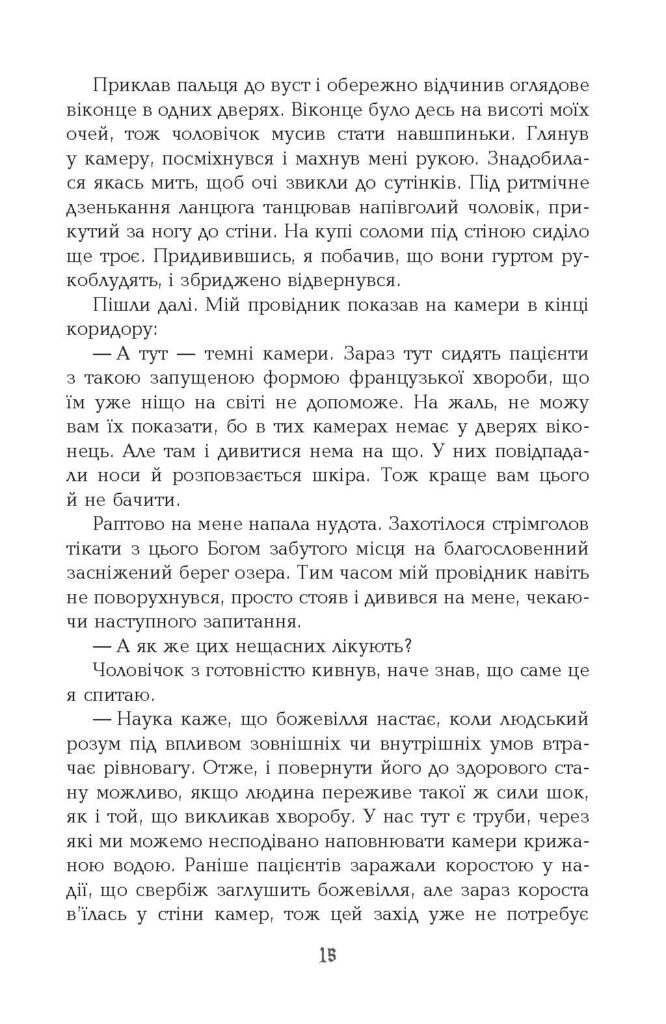
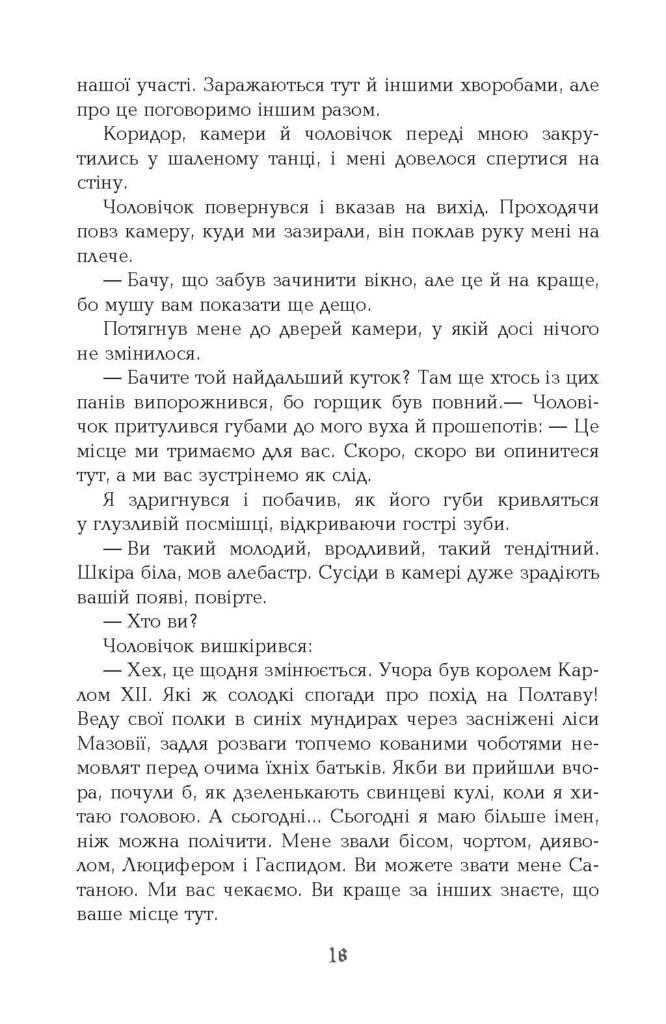
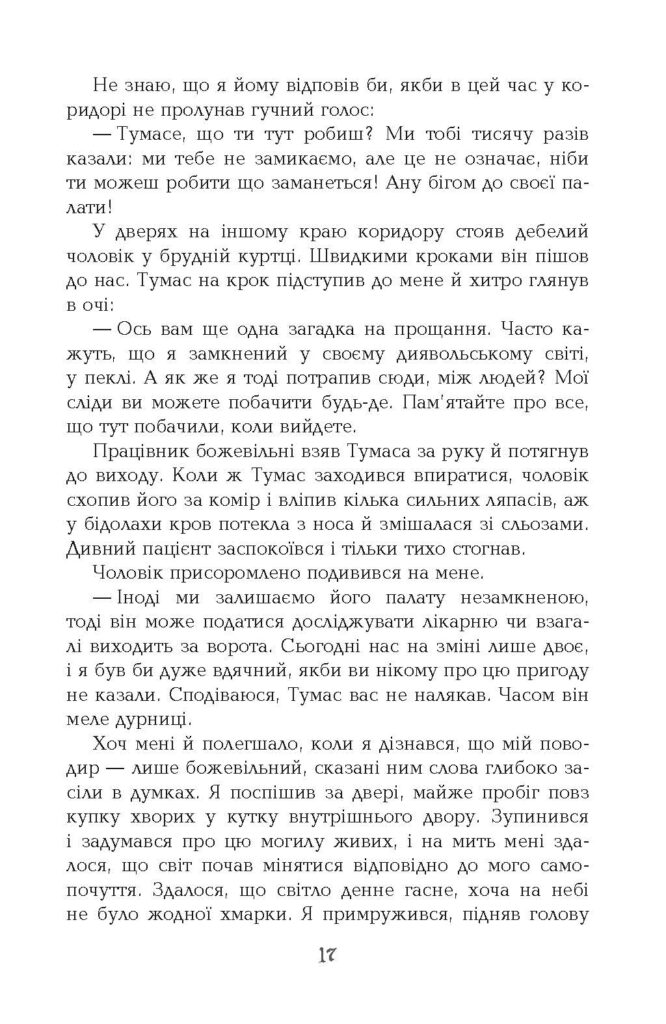
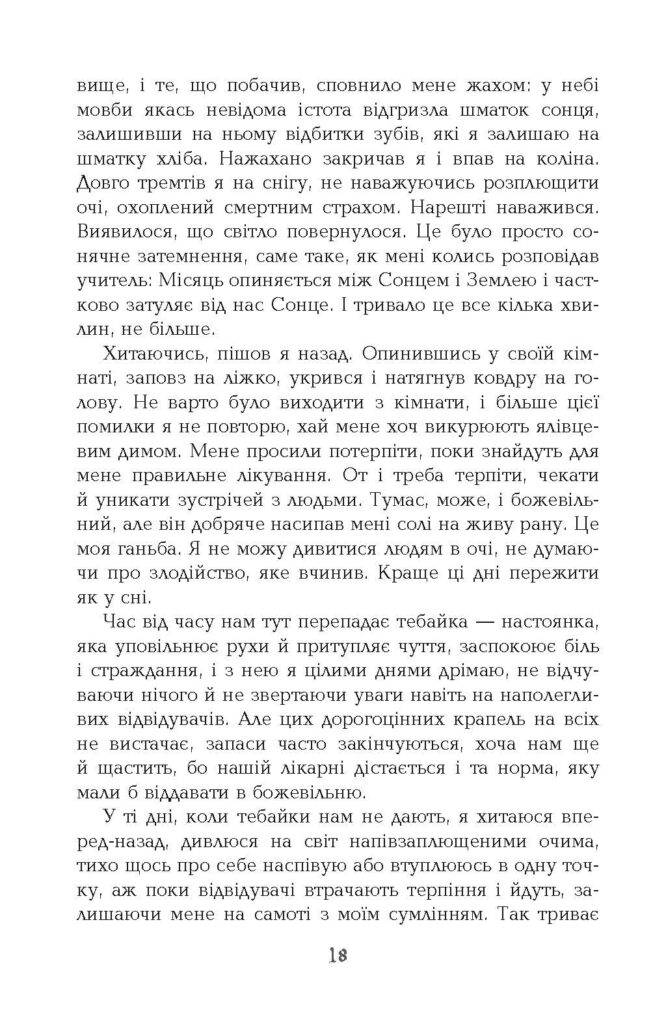
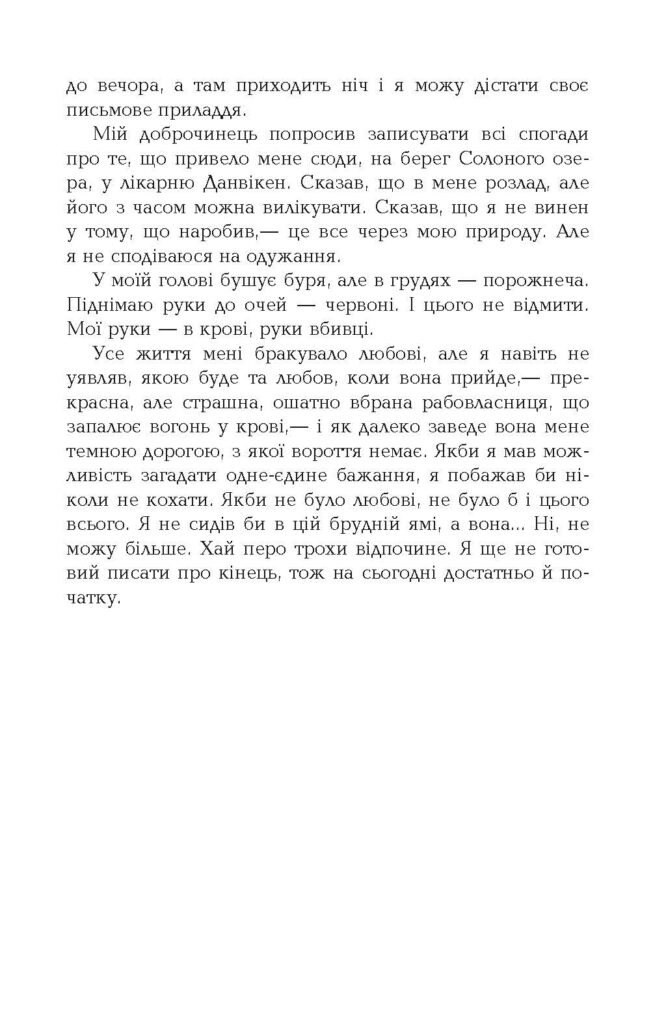
Про книгу
Молодий шляхтич Ерік Тре-Русур мучиться в стокгольмській божевільні. Він переконаний, що вчинив страшний злочин. Однорукий пальт Жан-Мішель Кардель і Еміль Вінґе, брат покійного комісара поліції Сесіла Вінґе, намагаються розібратися, що ж сталось у давньому родовому маєтку з ідилічною назвою «Три троянди». Але чи готові вони до того, що там знайдуть?
Автори
Відгуки
Залишити відгук
Вже прочитали? Оцініть книгу від 1 до 5:
30 відгуків для 1794
Швидка покупка

Ваше замовлення вже у нас!
Найближчим часом наші менеджери опрацюють його та зв’яжуться з Вами для уточнення деталей. Дякуємо, що обрали Портал!
Очікую!
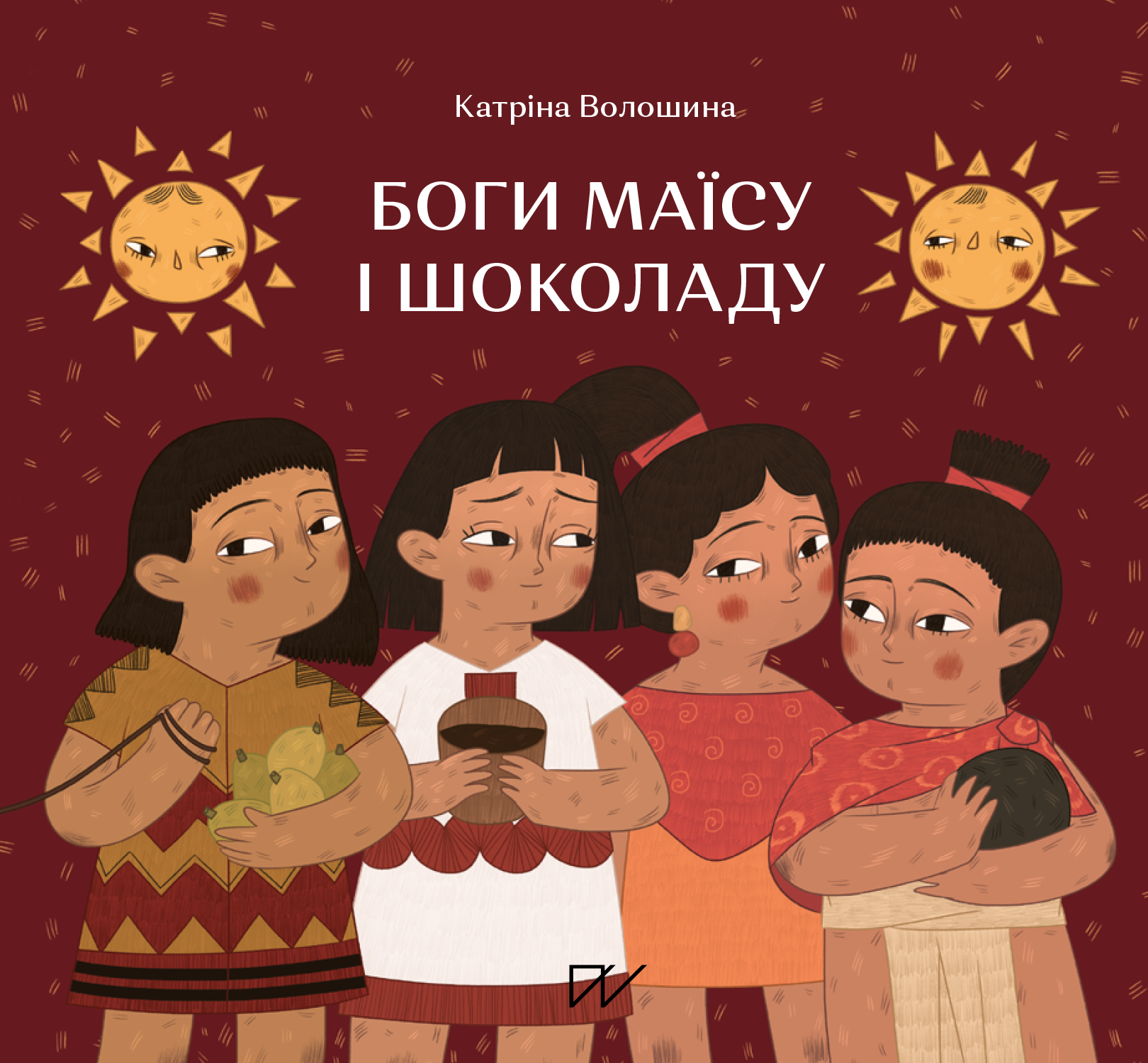

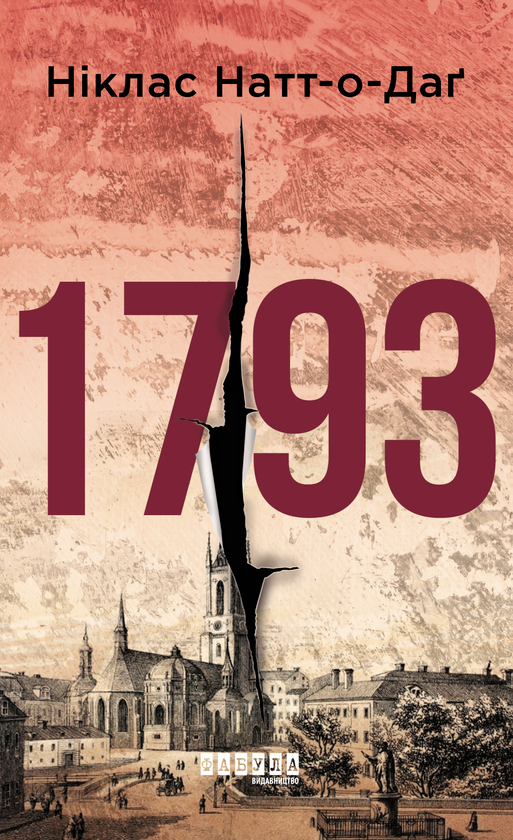
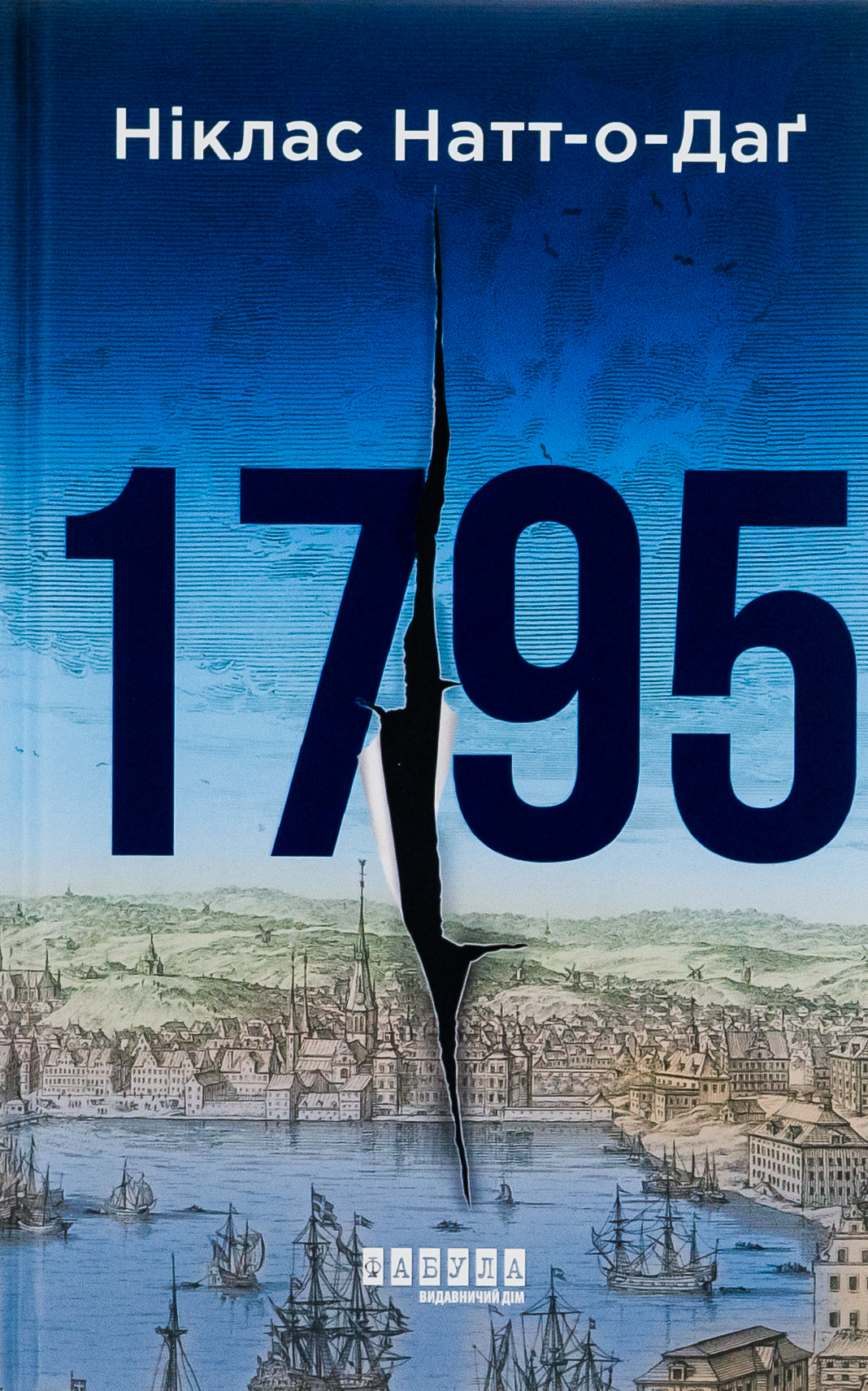

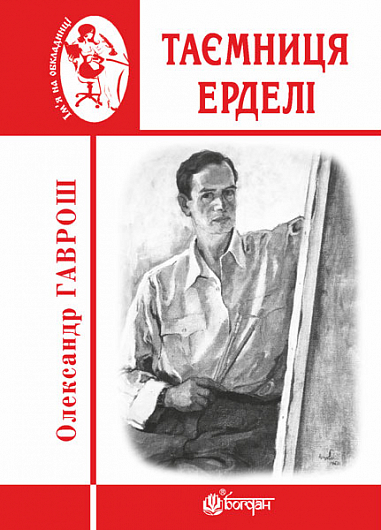
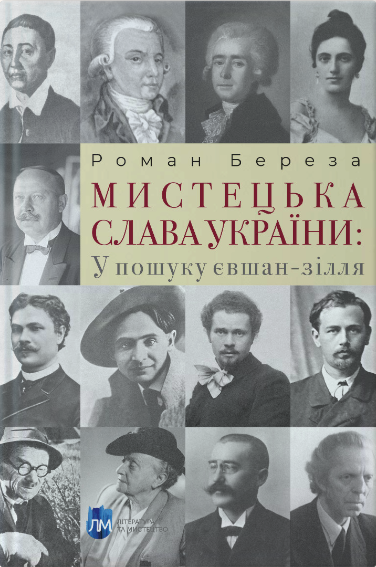
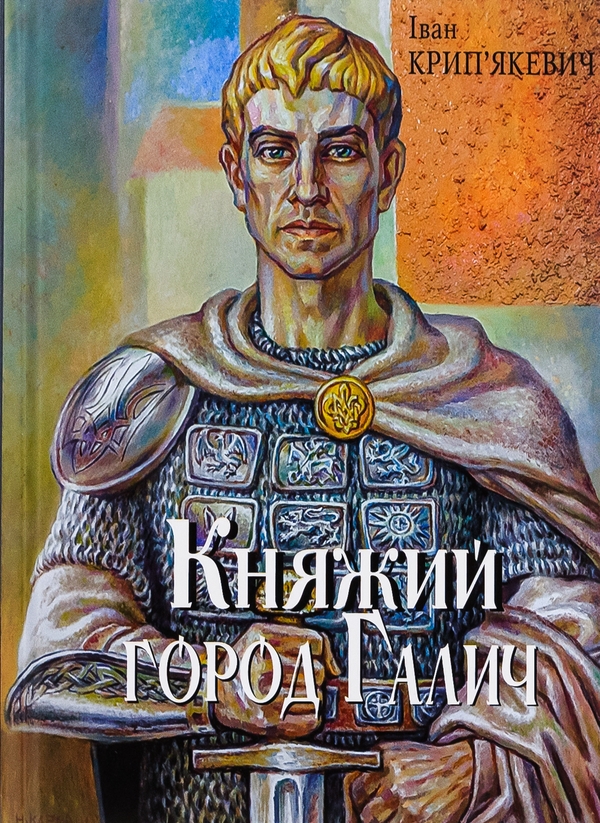
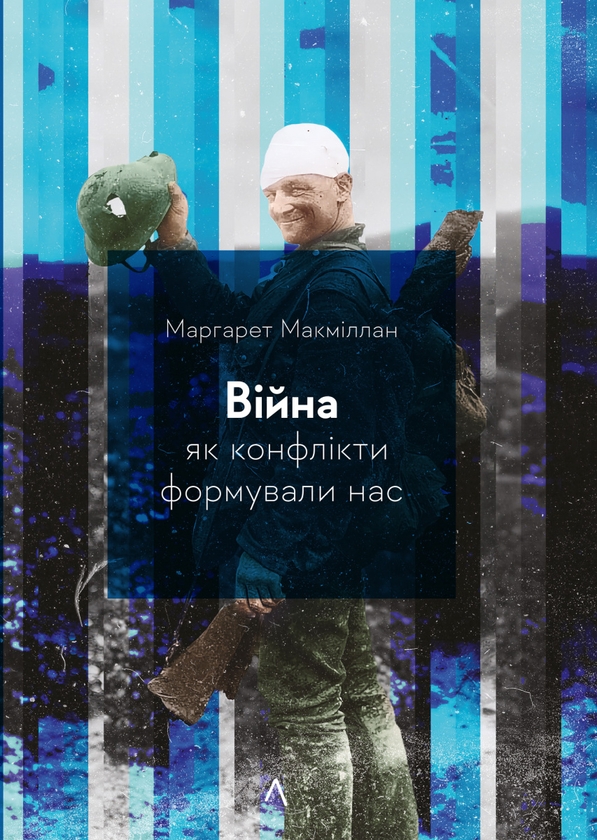
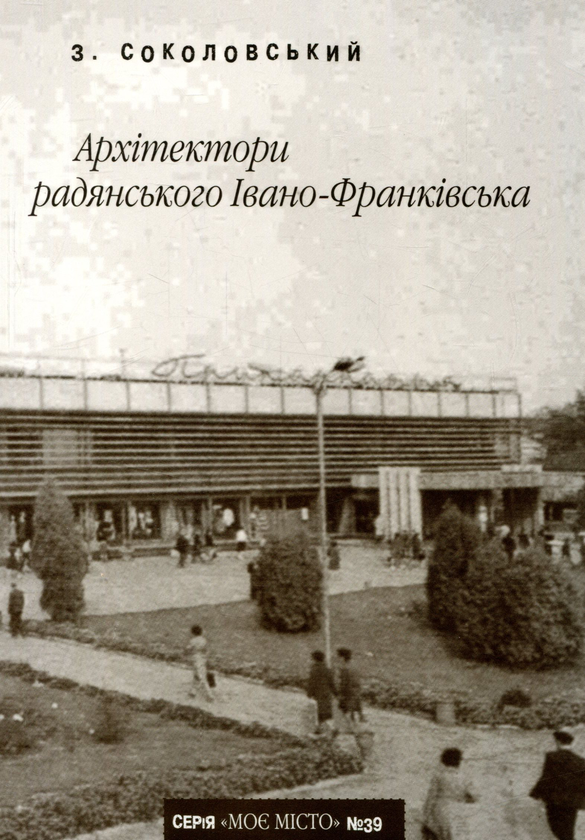
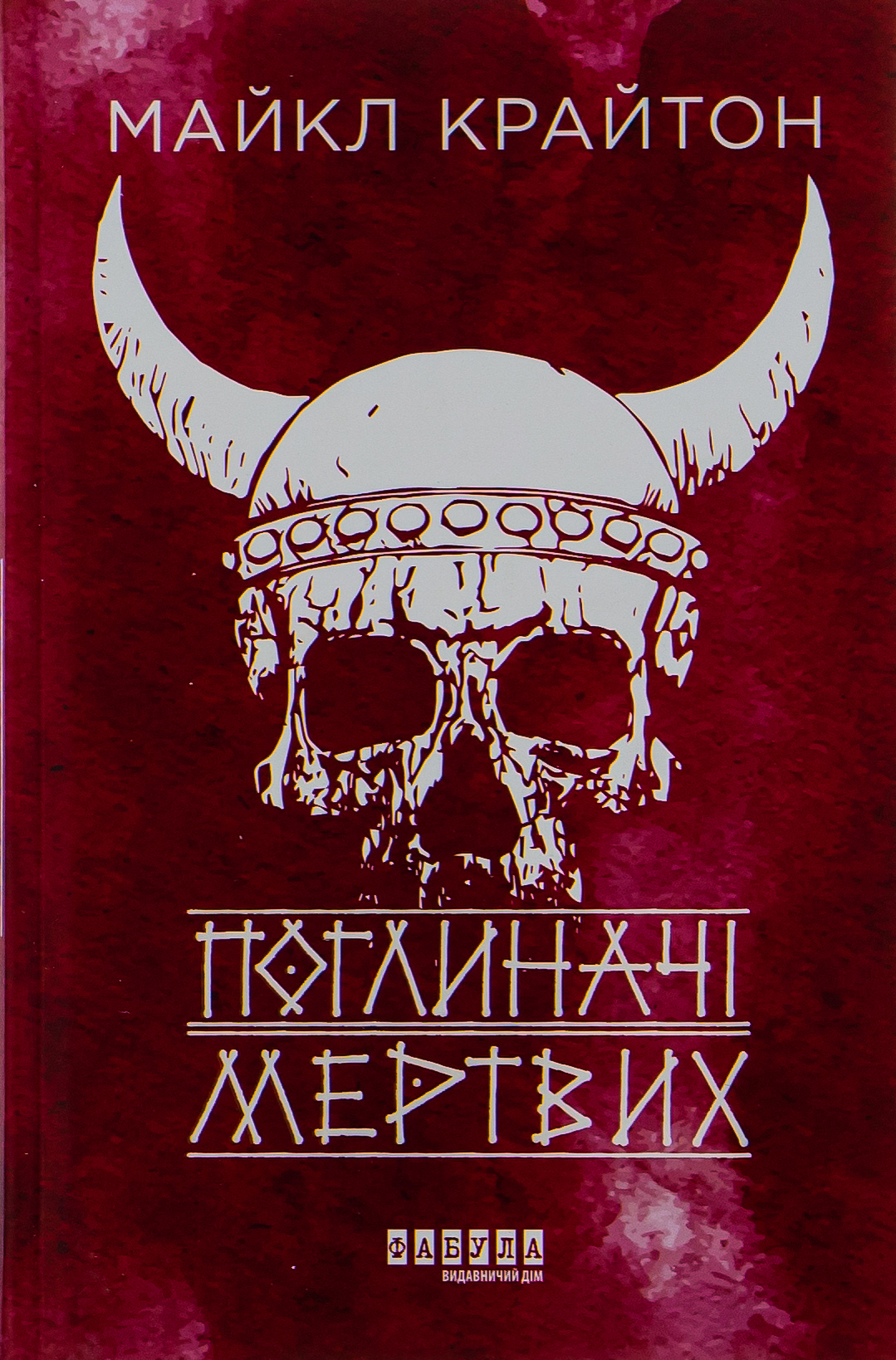
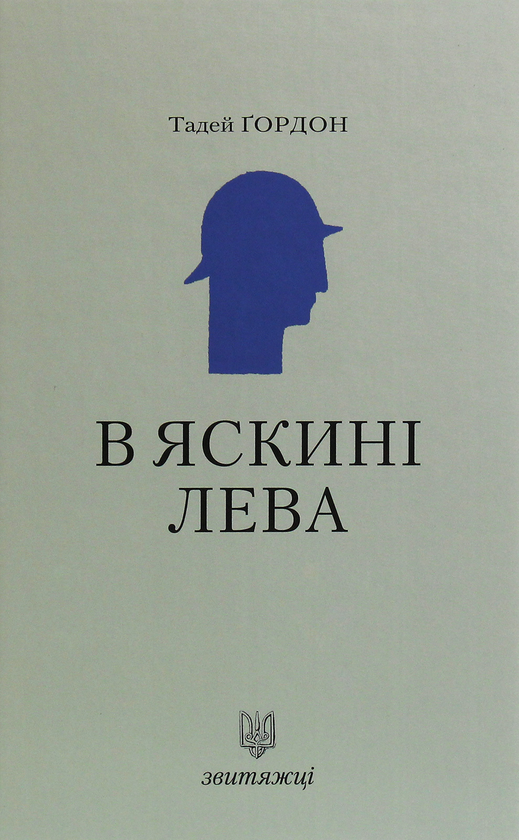
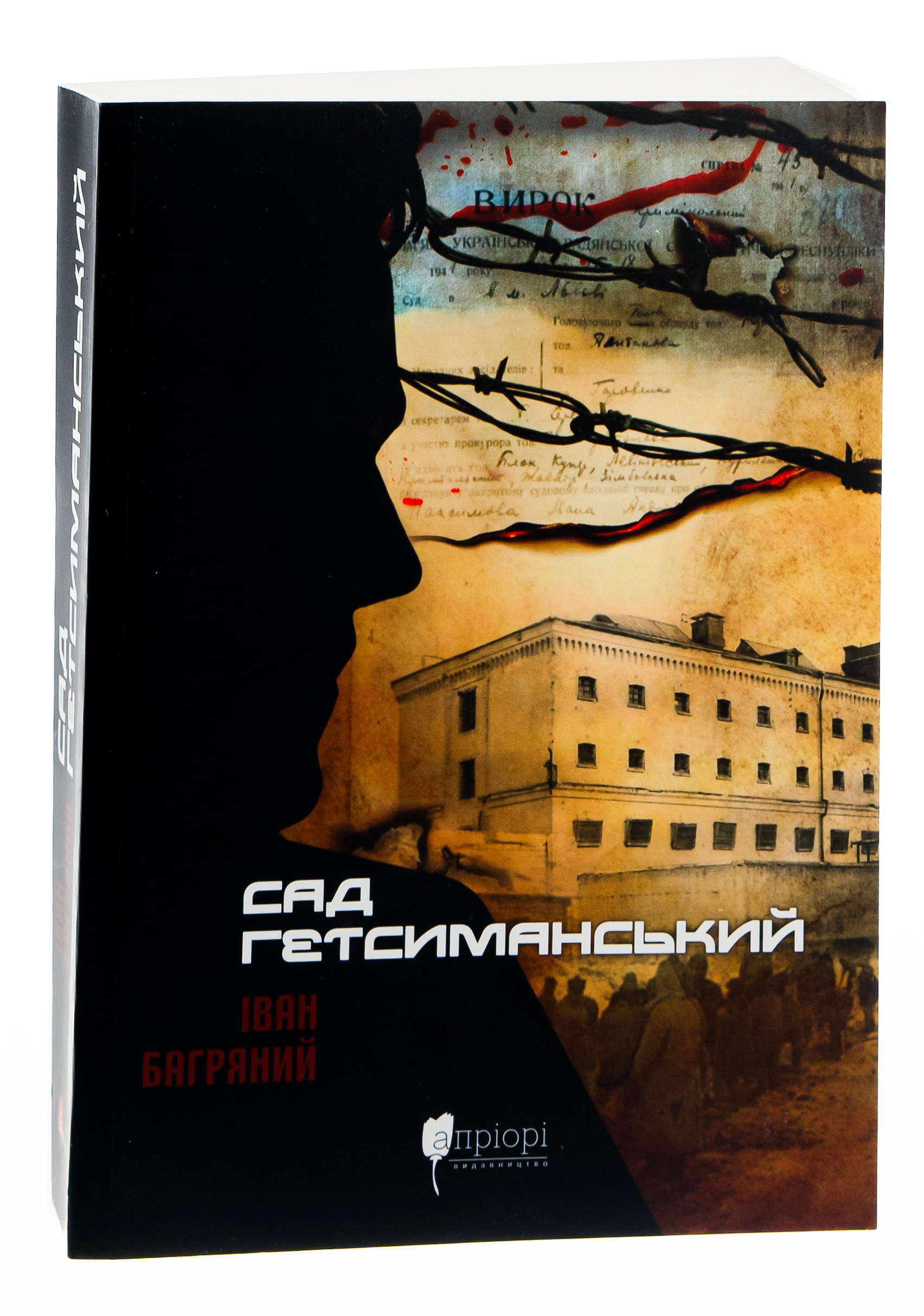
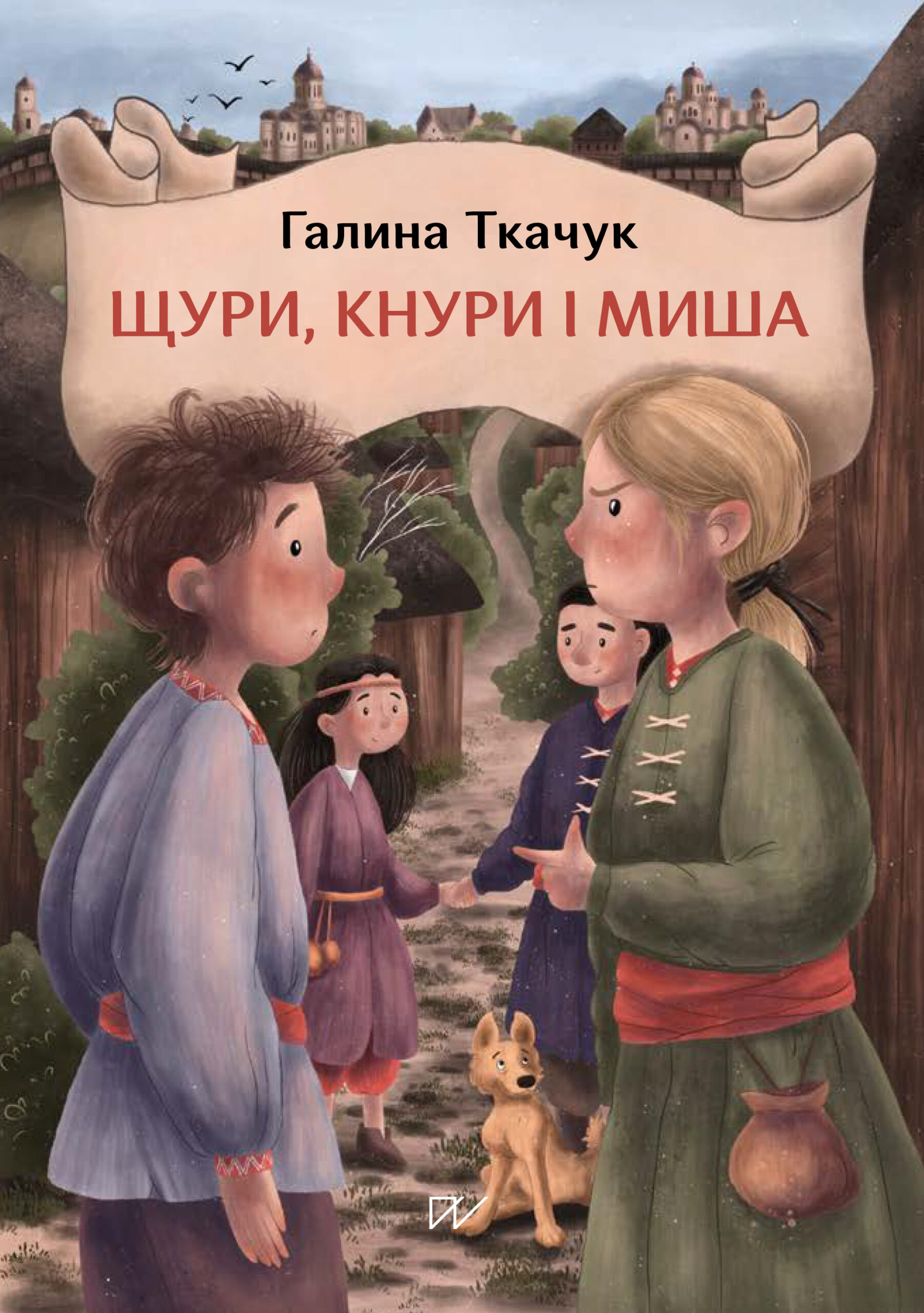
Niklas Laninge –
Typisk del 2 i vad som lär bli en superframgångsrik trilogi: otillfredsställande, för lång, intetsägande men ändå omöjlig att INTE läsa klart. Ser fram emot tredje och sista delen för detta var en klar besvikelse.
Maja Ingrid –
While not as good as 1793, it still deserves a 4 star rating for the superb writing and the gruesome descriptions.
Anna –
Herregud! Vilken stilist.
Sten Rosendahl –
Språket och miljöerna är fortfarande fantastiska, och inlevelsen i vanliga människors liv är en stor tillgång, men dragningskraften mot det rent bestialiska blir för stark i den här boken.
pfaffingers_bibliophilie –
Der erste Teil 1793 hat mir schon gefallen und ich hätte nicht vermutet, dass es eine Fortsetzung geben wird, da das Ende des Buches dies nicht angedeutet hat. Band 2 hat mir genauso gut, wenn nicht gar besser gefallen. In meinen Augen lassen sich beide Bücher aber nur bedingt miteinander vergleichen, da es sich hier nicht einfach um einen „Abklatsch“ von Band 1 handelt.Worum geht´s?In der Hochzeitsnacht wird die Braut durch ihren frisch vermählten Ehemann brutal ermordet, doch die Mutter der Braut glaubt nicht an die Schuld des jungen Adligen. Sie bittet Cardell um Hilfe. Und nicht nur sie benötigt Hilfe vom einarmigen Häscher…Meine Meinung:In diesem Buch geht es um so viel mehr, als nur um einen Kriminalfall und dessen Auflösung. Nicht ohne Grund ist das Buch als Roman bezeichnet. Der Kriminalfall zieht sich wie ein roter Faden durch das Buch, ist aber nicht das einzige Thema, dass der Autor erzählt. Brutal und schonungslos beschreibt der Autor das Leben im Dreck des 18. Jahrhunderts. Nichts lässt er aus, er kennt keine Gnade und beschönigt nichts. Die düstere Stimmung, die Kälte und die Armut scheinen greifbar, hinter den Worten, die Niklas Natt och Dag wählt. Das Buch ist nichts für zart besaitete, es nimmt keine Rücksicht und kennt kein Erbarmen. Ich war sofort mitten im Jahr 1794 und konnte dieses Buch nicht aus der Hand legen, ich musste wissen, wie es weitergeht, und nicht immer war dieses Wissen für mich die glückliche Wahl, ich musste oft schlucken, ob der Grausamkeit, derer die Protagonisten ausgesetzt waren. Für mich ist dieses Buch eine wahre Glanzleistung, hervorragend geschrieben und recherchiert. Das Ende hat mich mit offenem Mund und überwältigt zurückgelassen. Es ist schwer, in Worte zu fassen, wie mich dieses Buch bewegt hat.Fazit: GRANDIOS!
Elisso –
Ο Niklas Natt och Dag μας μεταφέρει για άλλη μια φορά στη Στοκχόλμη του 18ου αιώνα και στις πραγματικά πιο σκοτεινές μέρες όχι μόνο της πόλης αλλά και ολόκληρης της Σουηδίας. Το «1794» είναι ένα πολυεπίπεδο ιστορικό θρίλερ που κλείνει μέσα στις σελίδες του όλη εκείνη την ατμόσφαιρα της εποχής διατηρώντας τη βία, τη φρίκη και την ωμότητα που συναντήσαμε και στο πρώτο βιβλίο της τριλογίας. Η εξαιρετική μετάφραση του Γρηγόρη Κονδύλη αποτυπώνει τον παλμό εκείνης της εποχής και αναδεικνύει την λογοτεχνική φύση του κειμένου μέσα από τη λυρικότητα της γραφής του Niklas Natt och Dag εστιάζοντας ακόμα και στην πιο μικρή λεπτομέρεια κάνοντας την ανάγνωση του μια απολαυστική εμπειρία.Στο «1794» παίρνουν ξανά σάρκα και οστά οι ήρωες που έχει πλάσει ο Σουηδός συγγραφέας για να μας χαρίσουν απίστευτες στιγμές φρίκης, αγωνίας, ανατριχίλας, δράσης αλλά και συναισθήματα συγκίνησης και ενσυναίσθησης για τις δύσκολες ή όμορφες στιγμές που περνούν. Ο Ζαν Μίκαελ Καρντέλ – ο μονόχειρος Πατατοκεφτές -, η Άννα Στίνα Κναπ αλλά και νέα πρόσωπα όπως ο μικρότερος αδελφός του Σέσιλ Βίνγκε – που γνωρίσαμε στο πρώτο βιβλίο – Έμιλ Βίνγκε, ο Έρικ Τρε Ρουσούρ, η Λινέα Χαρλότα, ο Τίκο Σέτον είναι μερικοί από όσους θα συναντήσουμε σε αυτή την συναρπαστική ιστορία.Το 1793 ήταν σημαδιακό για τον Καρντέλ και η έρευνα για το ακρωτηριασμένο πτώμα είχε δώσει νόημα στη μίζερη ζωή του. Τώρα, ένα χρόνο μετά, αισθάνεται χαμένος στο πουθενά. Μέχρι τη στιγμή που θα ζητήσει τη βοήθεια του μια γυναίκα. Η κόρη της βρέθηκε κατακρεουργημένη την πρώτη νύχτα του γάμου της και για το έγκλημα κατηγορήθηκε ο νεαρός σύζυγος της ο οποίος και κλείστηκε στο τρελάδικο. Η μητέρα της κοπέλας όμως πιστεύει ότι δεν ισχύει αυτή η εκδοχή που της σέρβιραν και ότι πίσω της κρύβεται ένα ανεξιχνίαστο μυστικό. Ο Καρντέλ θα αναλάβει να εξιχνιάσει την υπόθεση της δολοφονίας της νεαρής νύφης οδηγώντας τα βήματα του στη βρωμερή άβυσσο της Στοκχόλμης που ζει κυριολεκτικά τις πιο σκοτεινές μέρες της. Τα προσωπεία πέφτουν το ένα μετά το άλλο και η λάμψη του παλιού καθεστώτος γκρεμίζεται μπροστά στο αβυσσαλέο και ζοφερό σκοτάδι που κρύβεται στις γωνιές της πόλης.Η αριστοκρατική καταγωγή του Niklas Natt och Dag – είναι γόνος μιας από τις παλαιότερες οικογένειες της Σουηδίας – σίγουρα δρα θετικά στην άρτια απόδοση των ιστορικών τεκταινόμενων του 18ου αιώνα στη Σουηδία αλλά και στην περιγραφή της πόλης εκείνης της εποχής όπου μέσα από τον αφηγηματικό του λόγο οι αναγνώστες αισθάνονται σαν να παρακολουθούν μια μικρογραφία της Στοκχόλμης να ζωντανεύει μπροστά τους. Οι σελίδες του βιβλίου βάφονται για άλλη μια φορά με το άλικο χρώμα του αίματος, του φόβου, της απόγνωσης, της αγωνίας, της φρίκης, της ανατριχίλας και της ωμότητας. Ο συγγραφέας βουτάει τον αναγνώστη στα βαθιά από τις πρώτες κιόλας σελίδες με την αναφορά του στον Άγιο Βαρθολομαίο – το Μπαρτελεμί – την πρώην και μοναδική αποικία της Σουηδίας βγάζοντας προς τα έξω τη σαδιστική και μαζοχιστική φύση του ανθρώπου.Εκείνη η σαγηνευτική αποικία του Νότου ��που κατοικήθηκε εξαιρετικά γρήγορα για να έχει έσοδα από φόρους, που ανήκε στο Σουηδικό στέμμα και ίσχυε μόνο ο Σουηδικός νόμος. Εκεί που υπάρχουν δυνάμεις όπου δεν τιθασεύονται ούτε με νήμα της στάθμης ούτε με χάρακα. Εκεί όπου άρπαξαν την ευκαιρία για μια νέα αρχή οι φυγάδες από τη δικαιοσύνη και μετανάστευσαν μαζικά στην αποικία. Με κλέφτες, πειρατές και δολοφόνους φτιάχτηκαν τα πήλινα πόδια που στηρίζουν τον γίγαντα του Μπαρτελεμί. Εκεί όπου οι περισσότεροι έχουν έγχρωμες μετρέσες και αναπαράγονται όσο τραβάει η καρδιά τους. Εκεί όπου ο άνθρωπος βγάζει τον χειρότερο του εαυτό. Εκεί όπου είναι η νεκρή ζώνη, το μοναδικό ουδέτερο λιμάνι που αράζουν τα δουλεμπορικά με τα κατάβαθα του κύτους τους γεμάτα σκλάβους που βγάζουν σπαρακτικές κραυγές. Εκεί όπου οι λεκέδες με αίμα δεν φεύγουν με τίποτα από τα ξύλα των πλοίων…Ο συγγραφέας μπλέκει για άλλη μια φορά δύο ιστορίες μαζί. Δύο ιστορίες που κινούνται παράλληλα για να ενωθούν λίγο πριν κριθούν όλα. Οι ήρωες βαδίζουν μαζί προς τη λύση του μυστηρίου αφήνοντας ο καθένας το δικό του λιθαράκι στην έκβαση της υπόθεσης που καταθέτει στις σελίδες του «1794» ο Niklas Natt och Dag. Συγκλονιστικές οι σκηνές που περνούν μπροστά από τα μάτια των αναγνωστών. Ακόμα και η λεπτομερής διαδικασία ενός τοκετού από τα έμπειρα χέρια μιας ηλικιωμένης μαίας αφήνουν ρίγη ανατριχίλας στη ραχοκοκαλιά μας και αυξάνουν τους ρυθμούς που χτυπάει η καρδιά μας τη στιγμή που διαβάζουμε το συγκεκριμένο απόσπασμα. Ο συγγραφέας δεν χαρίζει τίποτα στους ήρωες του. Δεν τους αφήνει κανένα ελαφρυντικό για τις πράξεις τους. Δεν δείχνει κανένα έλεος για αυτούς. Η γραφή του παρ’ όλη τη λυρικότητα της είναι κτηνώδης, άγρια και ανελέητη. Οι περιγραφές για τη ζωή των ανθρώπων του 18ου αιώνα είναι αμείλικτα ρεαλιστικές που διαπερνούν σκληρές εικόνες στα μάτια των αναγνωστών.Η Σουηδία του 1794 είναι μια φτωχή χώρα πλέον όπου βριθούν οι κοινωνικοπολιτικές αναταραχές και η κακή διακυβέρνηση έχουν φτάσει στο σημείο να απαγορευθεί ακόμα και ο καφές κάνοντας λόγο για ένα καθεστώς που θέλει τους υπηκόους του ηλίθιους και υπάκουους. Σε μια περίοδο που αποκαλούν ως η εποχή της λογικής όλοι εκείνοι που δεν καταλαβαίνουν ότι ο άνθρωπος κυβερνάται από δυνάμεις που υποσκάπτουν πολύ βαθύτερα από ποτέ τη λογική. Εκεί που οτιδήποτε υπερβαίνει την ικανότητα κατανόησης που διαθέτει ο άνθρωπος τον κάνει να αντιμετωπίζει το κάθετι με άσχημο και εχθρικό τρόπο. Σε μια εποχή όπου η αναξιότητα των κυβερνώντων έχει ως αποτέλεσμα να καταδικάζει τον άνθρωπο να είναι παντού αλυσοδεμένος ενώ είναι γεννημένος για να ζει ελεύθερος. Η ματιά του συγγραφέα μέσα σε όλα αυτά τα γεγονότα που κατακλύζουν τη Σουηδία του 18ου αιώνα καταθέτει ως μαρτυρία ότι ακόμα και στις μέρες μας τίποτα δεν έχει αλλάξει βγάζοντας όλη αυτή την ασχήμια που μαστίζει τις εποχές που έχουν περάσει μέσα από γκροτέσκες περιγραφές και εικόνες.Η ιστορία που έχει πλάσει ο Niklas Natt och Dag δεν είναι ένα απλό μυθιστόρημα, μια απλή ιστορική περιπέτεια αλλά ένα αργό και απολαυστικό αναγνωστικό «βασανιστήριο» για όσους έχουν γερά νεύρα και γερά στομάχια που θα δοκιμάσει τα όρια μας για άλλη μια φορά. Αλλά το «1794» δεν παύει να αποτελεί μια ιδιαίτερη αναγνωστική εμπειρία μέσα από το ιστορικό, αστυνομικό και κοινωνικό του υπόβαθρο που απλά κλέβει την παράσταση. Αναζητήστε το, διαβάστε το, περιπλανηθείτε στα σκοτεινά και βρώμικα σοκάκια της Σουηδίας, βυθιστείτε στην ανήθικη και παρακμιακή γραφή του και σίγουρα θα ανυπομονείτε για το επόμενο καθώς θα κλείνετε και την τελευταία του σελίδα.
Kristian Linde –
Never have I read anything this dirty, filthy and occasionally disturbing, and still come away with a positive feeling towards it.The brutal and horrendous world that Niklas Natt och Dag puts you is so dark that at times I had to put the book down, just because it left me with such an unpleasant feeling. Yet I kept going, and mostly because of his beatiful way of writing. His prose is superb, to the point where you feel like you’re reading something from the late 1700s. But also in a way where I feel that any translations wouldn’t do it justice.Now I have to go and read some childrens books with my son to clear my mind. 😅
João Sampaio –
Após a leitura de 1793, chegou a hora de me debruçar no 1794. Parece que estamos perante uma triologia. A ser verdade, lerei 1795 (se for assim que se venha a chamar), o próximo e último livro desta série.1794 é um romance histórico, um thriller passado em Estocolmo de 1794.O ambiente predominante continua a ser de muita sujidade, imensa embriaguez, cinismo, pobreza, doença, …, um ambiente denso, misterioso. Um enredo deveras convincente.Uma mãe chora a filha que foi assassinada na noite de núpcias. Ninguém quer investigar esta morte. Em desespero, ela bate à porta da única pessoa que lhe resta; Mickel Cardel. Entretanto, no hospital de Danviken, nos arredores de Estocolmo, um jovem nobre é atormentado pelo crime repugnante que cometeu.Em 1794, seguimos Mickel Cardell e Anna Stina Knapp num mundo “barulhento e depravado”, onde o último pedaço restante do esplendor Gustaviano está prestes a entrar em colapso.Uma escrita impressionante, com descrições meticulosas de lugares, cheiros, personagens, que absorveu toda a minha atenção, mesmo antes do final emocionante, inesperado e de tirar o fôlego. Uma escrita crua, física, que se precipita sem dó na história da Suécia.Niklas Natt och Dag, em 1794, deixou-me com a sensação que está longe de terminar a sua pintura brutal e direta dos cantos mais escuros de Estocolmo no final do século XVIII.Fico a aguardar o 1795!
Effie Saxioni –
Ένα συγκλονιστικό βιβλίο, γεμάτο πόνο,βία και απανθρωπιά, ταυτόχρονα όμως, πόσο ανατριχιαστικά ανθρώπινο. Πόσο εύκολο είναι ο άνθρωπος να αφήνεται στο σκοτάδι, πόσο εύκολο είναι να κάνει ότι δεν βλέπει την αχόρταγη μαυρίλα που καταπίνει τη ζωή του.Από την άλλη,πόσο δύσκολο είναι ο ίδιος άνθρωπος να ανοίξει τα μάτια του,να παλέψει, να επιπλεύσει στο βούρκο μιας ρημαγμένης κοινωνίας,να μην αφήσει την ταλαιπωρημένη του ύπαρξη να εξανεμιστεί χωρίς ίχνος. Άξια συνέχεια του 1793,εξαιρετική δουλειά και κατατοπιστικός πρόλογος από τον κ.Κονδύλη,και τώρα όπως κάθε φορά, καθόμαστε στα κάρβουνα για τη συνέχεια. Αριστούργημα μεν,βοηθάει η ανάγνωση κοντά χρονικά με το πρώτο, δε!
M. Malmierca –
¡Impresionante novela negra no apta para lectores sensibles!Aunque pudiera parecer difícil, la miseria, la violencia y la maldad sin sentido descritas en
1793
, son superadas con creces en 1974 (2019), el segundo libro de la serie Bellman noir del autor sueco Niklas Natt och Dag (1979-)La mezcla de caso policiaco y de descripción de época vuelve a funcionar, aunque, en mi opinión, sobresale esta última (de hecho nuestros peculiares detectives no aparecen hasta bien entrada la novela), porque la descripción de la “vida y costumbres” de la época es extraordinaria y nos sumerge de modo aterrador en los bajos fondos de un Estocolmo sucio, peligroso y soez. “ver borrachos harapientos arrastrándose en busca de algún rincón en el que nadie haya vomitado ni meado para poder dormir la mona y mendigos destinados a que la helada nocturna los vista de blanco antes de matarlos.”Se trata de un relato crudo y realista de una época convulsa y salvaje donde aún muchas personas eran tratadas más como animales que como personas. No falta ninguna de las atrocidades que pueden existir entre los humanos: esclavitud, asesinato, maltrato, corrupción, traición, engaño, crueldad, abuso, venganza, sadismo, enfermedad, pobreza, hambre … y locura, sobre todo mucha locura. Niklas ahonda sin ningún pudor en la zona más negra de la personalidad humana, allí donde no llega ni el más pequeño rayo de luz.”Antes se les solía inocular la sarna con la esperanza de que los picores triunfaran sobre la locura, pero ahora ya está en las paredes, por lo que los internos se contagian sin necesidad de nuestra ayuda.”La lectura es angustiosa tanto por lo que describe, como por el modo tan minucioso, tan explícito de contar las barbaridades cometidas en una época que según el autor no había final feliz ni para justos ni para pecadores. Una época de completa podredumbre tanto física como moral. Independientemente de la amplia ambientación, 1974 está bien escrito, posee un ritmo eficaz, escenas intensas, suficiente suspense, buena construcción de personajes y una trama original que entrelaza varias intrigas, muestra con antelación al culpable, te regala sorpresas y concluye con un consecuente final donde nos deja claro que hasta para conseguir justicia se ha de pagar un precio muy alto. Lo recomiendo sin duda, pero sólo para aquellos con estómagos fuertes. Yo esperaré con ganas la tercera entrega.NOTA: Aunque 1794 se podría leer por separado, creo se comprenderá mejor las relaciones de algunos personajes importantes si se ha leído con anterioridad 1793.
Bren –
Creo que no estaba en el mejor momento para leer este libro, ha sido demasiado para mí, tanta desgracia y miseria junta ha hecho que me costara mucho trabajo avanzar en la lectura.Este libro no tiene el mismo tipo de crudeza que el primero, tiene de otro tipo, el de la miseria de la naturaleza humana y creo que esta última es mucho peor que el que te describan con pelos y señales un asesinato.El libro es tan bueno como el primero, si no es que mejor, la historia es extraordinaria y como he dicho muy cruda, a diferencia del primero, en esta ocasión de algún modo el libro va mucho mas alrededor de los protagonistas que del caso que se investiga, incluso pronto en el libro de alguna manera se descubre todo, no se resuelve en ese momento, pero se descubre.Creo que el autor ha hecho un muy buen trabajo a la hora de darle un giro a los acontecimientos para que los protagonistas sigan en cierto modo, siendo los mismos, pero para poder hacer eso era indispensable que el autor hiciera lo que ha hecho, perfilar la vida de cada uno de ellos para que se asiente bien el lector la conciencia del cambio realizado con respecto al libro anterior, así que asumo completamente que tendremos más libros de esta serie.En mi caso desde que comienza el libro y el narrador nos relata sus vivencias en la Isla de San Bartolomé, no es que sean temas nuevos ni desconocidos, pero nunca es fácil leer cosas así, la crueldad, la maldad y lo bajo que caemos como seres humanos a la hora de tratar a otros seres humanos.No tengo ni idea de si la vida en el siglo XVIII realmente fuera como aquí la pintan, pero no me parece que este tan alejado de la realidad, por lo tanto, no deja uno de agradecer no haber nacido en una época tan terrible y cruel para la gente pobre.Sin duda con este libro el autor se consolida en mi gusto personal en uno de los buenos y en uno de los que hay que seguir.Tal como el libro anterior su ritmo es pausado, pero sin tregua, por lo que es uno de esos libros que resulta fácil leer en cuanto a su ritmo, lo que hace que uno se detenga un rato es la historia, hay que soltarlo, respirar y tomar aire para poder continuar porque en ningún momento el autor nos permite respirar, hay miseria y mucha crueldad entre sus páginas. Tiene exactamente la misma estructura del primero, de manera que además de la historia, el autor ha puesto el cuidado de hacer los libros similares para que se note que forman parte de un todoPor lo que respecta a la historia, por supuesto es una interesante, aunque como he dicho mucho del libro no gira alrededor de la misma, si no más bien ha sido como el pretexto para juntar a estos dos personajes, que se conozcan ellos y conocerlos nosotros y por supuesto darle una continuidad a lo que vimos en el primer libro.
Ángel Real –
Muy digna continuación del 1o de la saga, 1793.La verdad es que este sueco escribe maravillosamente. Me quedo, por poco, con el anterior, pero es un muy buen libro este también.
Javir11 –
7/10Gustándome, me ha entretenido menos que el anterior. Creo que he echado en falta la relación entre los dos protagonistas de la primera novela, que en este caso está muy metida con calzador y no es lo mismo.A su favor tiene la oscuridad y crudeza que ya nos acompañaba en 1793, de hecho incluso diría que en ciertos momentos se llega hasta superar ese umbral previo y más de uno puede no sentirse cómodo con tanta crueldad y sadismo. Con esto no quiero decir que me guste el gore, ni disfrute del mal ajeno, pero es innegable que su autor sabe plasmar muy bien el dolor y las penurias que la gente de esa época tenía que lidiar a diario.Por contra, además de lo ya comentado acerca de la falta de chispa en la relación entre los dos protagonistas, en algunos momentos creo que su autor podría haberse ahorrado alguna de las escenas de sadismo que nos ofrece, en especial aquellas que quizás sean un poco gratuitas y aporten poco o nada al conjunto. Con respecto a todo lo demás, pues cumple bien sin más, la trama detectivesca esta bien hilvanada, de hecho el modo en el que se nos cuenta la historia me gustó, pero tampoco es que sea la panacea, los secundarios más de lo mismo y tanto la prosa como el estilo narrativo ayudan a que el libro se lea bien.Resumiendo, si te gustó 1793, esta segunda entrega es un más de lo mismo que ya viste, quizás algo más duro, aunque esa apreciación dependerá mucho del lector, y lo que más se echa en falta es la relación entre los protagonistas de la primera novela. Por otro lado, si no te gustó el anterior, esté mejor que lo dejes de lado.
Kurkulis (Lililasa) –
Tumšs, bezcerīgs, nabadzīgs, brutāls, smirdošs. 18.gadsimts. Nežēlīgi noslepkavotā jaunā meitene ir mazākais, kas satriec un spiež pie zemes šajā darbā.Nosolījos, ka triloģijas pēdējo grāmatu vairs nelasīšu. Bet! Tas nolāpīti talantīgais autors stāstu ir beidzis ar “Turpinājums sekos” un manas mokas vēl nav galā. Man tomēr rūp varoņu likteņi.P.s. no cerētā detektīvgabala gan te ir maz. Vēsturiskā vide stāv pāri visam un tu ņem un pieķeries tiem dažiem varoņiem, kas visā tajā atejas bedrē nav pazaudējuši godaprātu.
LolaF –
Mucho más duro y cruento que el primer libro. Difícil de digerir en algunas escenas.⚠️⚠️ Ligero espóiler de la primera parte del libro ⚠️⚠️El libro mantiene un paralelismo con la estructura de 1793: cuatro partes y capítulos cortos. Sin embargo el desarrollo del mismo, el ritmo, los temas que trata y el desenlace es distinto a su predecesor. No arrancamos con el hallazgo de un cuerpo y un crimen a investigar. No terminamos con un final tan cerrado como en el primer libro, quedan muchos interrogantes abiertos con la vida personal de sus personajes. Se nota que es una trilogía inacabada y por ello nos han dejado en ascuas esperando el siguiente libro. Si en 1793 tenía un gran peso las miserias e inmundicias materiales en que vivía la gente, sin dejarlas de lado, aquí el autor va un paso más allá, se centra más en las miserias de la mente humana: la maldad. ¡No tengo otra forma de decirlo!La crueldad, el dolor y repulsión de algunas escenas y ante algunos personajes, es difícil de digerir. Cuesta más de leer, tal vez por ello el ritmo me ha parecido más lento. Es 1794, en una sociedad clasista, las clases pudientes quieren lo mejor para sus hijos o tal vez quieren garantizar la sucesión, el apellido y la fortuna. El primogénito hereda, pero el resto de hijos también deberían estar a la altura de lo que se espera de ellos. Erik, nuestro protagonista es enviado a San Bartolomé, una colonia sueca en las Antillas, para que se espabile y se convierta en un hombre. San Bartolomé es una isla volcánica, difícil obtener ingresos con el cultivo de la caña de azúcar. Su fuente de ingresos provenía de ser el único puerto libre en aquella época y ya sabemos lo que se comerciaba en aquella época: personas. Para abrir boca, el autor nos “deleita” con una escena de esa actividad que me revolvió las tripas. Pero lo peor de esta parte no es el comercio de personas, algo más o menos conocido, aunque bien retratado. Lo peor es la maldad de las personas. Es ver con tus ojos algo que sucede y la inocencia de otra persona no puede ver. Es esa impotencia que te hace sentir cuando deseas gritar: ¡espabila! ¡abre los ojos, chaval!La maldad no tiene fronteras, regresa a Suecia con más recursos que antes. La maldad quiere recuperar el tiempo perdido y rodearse de la élite, para ello no dudará en hacer lo que considere oportuno. Y vuelves a tener la misma sensación de impotencia y rabia, ves e intuyes parte de lo que puede pasar o de lo que realmente ha pasado. Aún no tienes la confirmación y el detalle, tendrás que esperar un poco hasta llegar a la investigación. ¡Ya tenemos un cuerpo! Y aún así, lo sientes más por el vivo que por el muerto y su familia.Vuelve a entrar en escena alguno de los personajes que conocimos en 1793. Debido a las circunstancias los personajes tienen que asumir nuevas responsabilidades. Han evolucionado y veremos otras facetas y matices de su personalidad. Aunque se nombren en la sinopsis no voy a decir sus nombres. Y os dejo con la incógnita que nos mantuvo en vilo durante el primer libro, saber si continúa o no Cecil Winge. No voy a desvelar más de la trama o de los personajes principales. Ya he realizado bastante espóiler. Los nuevos personajes están bien perfilados. La maldad -no merece mencionar otro nombre- no es sólo interior, se realza con esa repulsiva caracterización: una herida en la cara que le supura. De los personajes secundarios, me ha gustado el personaje y el papel de Lisa Soledades, una superviviente que ha elegido o se ha visto obligada a otro tipo de vida. Ese pequeño homenaje y reconocimiento a esa matrona vocacional, que a pesar de todo lleva a buen puerto su misión -aunque un poco forzado, ¿¡Cómo lo ha conseguido en esas condiciones!?-. ¡Horrible lo que hacían los médicos en aquella época con los partos múltiples! También conoceremos como funcionaban los orfanatos de la época, pobres niños. ¡El más listo, el tonto!La maldad y el sadismo ¿podría considerarse una enfermedad mental? Más de una forma de locura veremos en estas páginas. Y también nos invitaran a dar un paseo por los manicomios de la época. Os lo podéis imaginar, terrible los métodos utilizados y las condiciones en que estaban. La ambientación sigue siendo muy buena, tanto en Estocolmo como en San Bartolomé. La parte de investigación policial tiene bastante menos peso y la relación entre los investigadores no tiene esa relación especial que sentimos en el primer libro. El final es muy duro, ¿¡A que precio se combate la maldad!?. Impotente, desolada, arrasada por el gallo rojo me ha dejado. Esos personajes que han luchado por enmendar, mejorar, rehacer su vida o la de sus seres queridos. Esos inocentes que han perdido su oportunidad… Reconozco que volvemos a tener un buen libro. La prosa sigue siendo magnífica y la labor del traductor y la editorial, muy buena. Me ha resultado mucho más duro de leer que el anterior, por ello me ha costado más disfrutarlo. Ya he comentado que tenemos un final abierto en la vida personal de algunos personajes que nos deja con ganas de continuar con el siguiente, pero aunque ya estuviese publicado en castellano, creo que después de leer los dos primeros seguidos, necesito intercalar algún otro libro. Desintoxicarme un poco y reponer fuerzas. Mi valoración es un poco más baja que en el primer libro (9,5/10), no por considerarlo peor libro, sino por como me ha dejado. Valoración: 8,75/10Lectura: diciembre 2021.
Sebastian –
Einige Monate sind vergangen, seit der Jurist Cecil Winge gemeinsam mit dem Stadtknecht Jean „Mikkel“ Cardell ein entsetzliches Verbrechen aufgeklärt hat, doch in Stockholm hat sich seitdem wenig verändert und das Jahr 1794 präsentiert sich den meisten genauso unmenschlich wie dessen Vorgänger. Nach dem tödlichen Attentat auf König Gustav III. zwei Jahre zuvor sucht das Land weiterhin nach politischer Stabilität und die Elite fürchtet um den Erhalt ihrer Macht, während das schwedische Volk zum überwiegenden Teil weiterhin ein elendiges Dasein in Blut und Dreck führt. Wer also blauäugig gehofft hat, dass der Schwede Niklas Natt och Dag in der Fortsetzung seines Bestsellers „1973“ etwas gnädiger mit seinen Charakteren und seinem Publikum umgehen würde, kann diese Hoffnung schon bald wieder zu Grabe tragen. Dabei beginnt „1794“ zumindest oberflächlich betrachtet deutlich angenehmer als der Vorgänger, denn der Autor verfrachtet den ersten Abschnitt seiner ein weiteres Mal in vier große Teile aufgeteilten Geschichte raus aus dem Moloch Stockholm und rauf auf die Karibikinsel Saint-Barthélemy, die mit ihren paradiesischen Stränden, türkisfarbenem Wasser und malerischen Häusern kaum einen größeren Kontrast zur überfüllten und verdreckten schwedischen Hauptstadt bieten könnte. Doch natürlich trügt der äußere Schein, denn die schwedische Kronkolonie ist vor allem ein Paradies für wohlhabende weiße Besatzer, während die einheimische Bevölkerung brutal versklavt und ausgebeutet wird und der Menschenhandel mit den umliegenden Inseln der Kleinen Antillen floriert. Somit bleibt Natt och Dag auch durch den vorübergehenden Szenenwechsel seiner abgründigen Grundstimmung treu.Natürlich gibt es aber auch ein Wiedersehen mit alten Bekannten, wobei vor allem Jean Michael Cardell erneut im Mittelpunkt steht. Der kriegsversehrte Stadtknecht wird dabei ein zweites Mal als Ermittler gebraucht und soll den Mord an einer frisch vermählten jungen Braut aufklären, die in ihrer Hochzeitsnacht auf grausame Weise zu Tode geprügelt wurde. Als Täter wurde schnell der Bräutigam des Opfers ausgemacht, doch die Mutter der Toten glaubt nicht an die Schuld ihres kurzzeitigen Schwiegersohnes und hofft, dass Cardell an den Ermittlungserfolg seines letzten Falles anknüpfen und auch dieses Verbrechen aufklären kann, bevor der verdächtige Ehemann im örtlichen Irrenhaus auch noch das letzte bisschen Verstand verliert. Für den rustikalen Veteranen eröffnet der Fall eine Chance, seinem trostlosen Leben endlich wieder einen Sinn zu geben, zumal Cardell seit seinem letzten Fall auch einen schweren persönlichen Verlust verkraften musste. Allerdings muss sich der einarmige Ermittler auch diesmal nicht alleine durch das abgründige Stockholm kämpfen, sondern bekommt vom Autor erneut einen Partner an die Seite gestellt – allerdings wartet hier eine bittersüße Überraschung auf die Leser:innen, die der Reihe trotz einer Menge Trauer und Wehmut jedoch auch eine interessante Wendung verpasst.Insgesamt weist „1794“ sehr viele Parallelen zum ersten Band auf: Der Aufbau ist nahezu identisch, die Charaktere entweder dieselben oder sehr ähnlich zu ihren Vorgängern und auch inhaltlich macht Niklas Natt och Dag viele Schritte zurück zu den Orten und Konflikten von „1793“. Man kann dem Roman also durchaus vorwerfen, im Vergleich zum vorangegangenen Buch wenig Neues zu bieten und sich zu sehr auf Bewährtes zu verlassen. Andererseits hat eben jenes beim ersten Mal hervorragend funktioniert und tut dies auch beim zweiten Mal noch: das historische Stockholm-Setting ist nach wie vor wahnsinnig spannend und mit seinen unendlichen Abgründen wie gemacht für einen düsteren Roman wie diesen, die Charaktere sind nicht weniger faszinierend und komplex und auch die Geschichte selbst schafft es erneut mitzureißen, auch wenn man inzwischen zu wissen scheint, wie der Autor tickt und welche Spielchen er mit seinem Publikum treibt. Doch auch wenn man weiß, dass es sich in dessen Universum kaum lohnt, positive Gefühle wie Glück, Zuversicht oder Hoffnung zuzulassen, so gibt man sich beim Lesen dennoch wieder seinen Instinkten hin – nur um dafür wieder und wieder mit neuen bitteren Tiefschlägen brutal abgestraft zu werden. Es mag sein, dass „1794“ schwächer ist als „1793“ und auch das sehr offene Ende wird vielen nicht gefallen (auch wenn mit „1975“ der nächste und finale Band bereits in den Startlöchern steht). Allerdings haben mich in den letzten Jahren nur wenige Bücher so gefesselt und emotional gepackt, wie es Niklas Natt och Dag mit seinen beiden Stockholm-Romanen geschafft hat, und ich kann es kaum erwarten, mir von ihm ein weiteres Mal Herz und Seele brechen zu lassen – daher ist mir auch dieses Leseerlebnis wie schon zuvor bei „1793“ erneut die volle Punktzahl wert.
Agnė –
2.5.
Andy –
A return to Stockholm in the era of the French revolution?A Stockholm which certainly isn’t the splendorous city that it is today with it’s cesspit of a disease-ridden swamp on its doorstep, at least that was one of the prevalent recollections from the first book. The book starts with a cast of characters html5-dom-document-internal-entity1-amp-end looking down I’m pleased to see one or two names that I did wonder if they would make it through the winter of 1793!To return to the opening question, well actually NO……. The story starts in the interior of the country with a titled family that of a father html5-dom-document-internal-entity1-amp-end his two sons where we follow the memoirs of the younger son whose mother died giving birth to him which caused the father to resent him somewhat which is all too evident in the narrative. Said son, whose called Eric we later find out, falls for beautiful peasant girl but before long they are parted html5-dom-document-internal-entity1-amp-end the son is on his way to an island in the Antilles to be educated in the ways of the world (at his father’s behest but mostly to forget said peasant girl), that being of the slave trade which is prominent where he lands, St Barthelemy, which we soon find is the central hub for the slave trade html5-dom-document-internal-entity1-amp-end everything murky that goes with it. I’m well into the book html5-dom-document-internal-entity1-amp-end Stockholm is no-where to be seen, nor are the wolf html5-dom-document-internal-entity1-amp-end the watchmen as they were affectionately named in the first book however the story is engrossing html5-dom-document-internal-entity1-amp-end Im sure we’ll get to them but for now this is grandly written. And then jus like that part 1 is over html5-dom-document-internal-entity1-amp-end I find the book is in parts telling different stories which should really be no real surprise to me, as it was with the first! I wont reveal how part 1 plays out only to say it kinda ended very piecemeal html5-dom-document-internal-entity1-amp-end all in a rush……. Well? how to continue with a review without spilling the beans…… I normally make notes as I go html5-dom-document-internal-entity1-amp-end then review come the end to check there still relevant html5-dom-document-internal-entity1-amp-end also look for spoilers html5-dom-document-internal-entity1-amp-end then up they go….. can’t really do it for this one so excuse the review somewhat html5-dom-document-internal-entity1-amp-end it’s “style” or lack there off :)Part 2 html5-dom-document-internal-entity1-amp-end 3 bring us back to more familiar characters html5-dom-document-internal-entity1-amp-end locations although the connection(s) are yet to be seen nor any real sense of where all this is going unlike the first in the trilogy which was clearer to see as you read through the diffo parts. This is almost like three diffo stories html5-dom-document-internal-entity1-amp-end if like me you get to the start of the final part you’ll be wondering HOW ON EARTH is all this gonna come together??!! I shall let you find out for yerself.I will say it’s engrossing in its own way, even the small chapters with what seem to be acts of little relevance at the time. Each part is brilliant in it’s telling with its diffo set of characters html5-dom-document-internal-entity1-amp-end story, the pacing for each is spot-on as is the narrative, dialogue html5-dom-document-internal-entity1-amp-end historical fiction of the era. You will be pulled in into each part. Do all the parts connect in a satisfying way? That’s a difficult one to answer in truth as it rings in part, as in the first book, of poetic justice for some, as well as that of abject injustice in a harsh world for others.Its as the first one, 3.5 stars rounded upto a four
Charlie Parker –
1794. 4’5/5Extraordinaria novela al nivel de la primera de esta serie. Quizás esta no sorprende tanto como la anterior pero la ambientación y el clima que crea el autor en la Estocolmo de finales del siglo XVIII está muy logrado.Los personajes, perfectamente desgraciados, intentando sobrevivir entre tanta miseria y malos rollos por todas partes, tienen tiempo para ocuparse de investigar un horrendo crimen que ni les va ni les viene.Un final un tanto confuso nos cita con la tercera entrega que se prevé apasionante.
Tobias Grey –
Un libro muy bueno y muy duro.Señalar que a pesar de todo, ambientación, trama, me quedo con el primero, que me impactó más.Valoración 3.5
Елвира –
This is unbelievable, such a perfect novel, and such a great continuation of “1793”! Again, I read it for about a day. This will turn out to be one of the best literature series I’ve ever read. It really is a masterpiece.
Faith –
This is the second book of a trilogy set in 18th century Stockholm. It takes place a few months after the ending of “The Wolf and the Watchman”. Two characters from the first book continue in this book. Mickell Cardell is a watchman, one of a group of loosely organized law enforcers. In this book he meets Emil Winge, the younger brother of a character from the first book. Emil is a drunk who has spent time in an asylum. The story of Anna Stina, who escaped from a work house, also continues in this book. Her situation is still dire. The book opens with a visit to an insane asylum and segues into an account of how the young aristocrat Eric Three Roses wound up in a sorry state. His father had sent him to work on an island that was not what Erik had expected, and things became even worse when he returned to Sweden. Cardell and Emil are drawn into an investigation of a mysterious death involving Erik.I waited a long time for this book to appear in an English language audiobook. I was so anxious to read it that I didn’t even read the blurb, and I was really stunned by the ending of part one of the book. However, I shouldn’t have been shocked since I read the first book, so I know about the author’s fondness for depravity. He is way too comfortable describing horrific acts. His books are full of despicable acts, gruesome details and depressing events. There is no happiness here. Yet, I like these books so that’s a little worrying. The books are well written and atmospheric and I definitely want to know what happens in the third book. This book can be read as a standalone, but I do think that it is preferable to read the books in order. If you don’t like exceedingly dark books, skip the trilogy.
Μπάμπης M. –
Θα θελα για λίγο να βρεθώ μια παγωμένη νύχτα στην Στοκχόλμη του 1794. Να φορέσω μια ρεντιγκότα και μια άσπρη περούκα. Να συρθώ σε ένα καπηλειό και να γίνω κόκκαλο από το ακβαβίτ.
Georgia –
Δείτε επίσης και στο Chill and readΚι αφού με χαρά διαβάσαμε το «1793: Τότε που βασίλευε η βία» και, παρά τις βίαιες και αηδιαστικές πολλές φορές σκηνές, μας άρεσε, προχωρήσαμε στο δεύτερο βιβλίο και εντρυφήσαμε λιγάκι παραπάνω στη Στοκχόλμη της εποχής. Ο παλιός μας γνώριμος, οι Ζαν Μίκαελ Καρντέλ είναι εκεί, όμως φαίνεται πως η ζωή του δεν έχει νόημα. Ο Σέσιλ έφυγε, η Άννα Στίνα έχει πλέον τακτοποιηθεί, ο πολιτάρχης άλλαξε κι ο Καρντέλ περνάει τις μέρες του πίνοντας. Μέχρι μια μέρα που μια γυναίκα, η μητέρα μιας κοπέλας που είχε βίαιο και αποτρόπαιο θάνατο τη νύχτα του γάμου της, ζητά τη βοήθειά του. Αυτή θα είναι και η σανίδα σωτηρίας που θα επαναφέρει τον Καρντέλ πίσω στην πραγματικότητα και την καθημερινότητα, και μακριά από το ακβαβίτ, όσο αυτό είναι δυνατό.Πάμε λοιπόν πίσω στο Γενάρη του 1794, όπου γνωρίζουμε τον Έρικ. Ο Έρικ βρίσκεται στο νοσοκομείο του Ντανβίκεν, κοντά στο τρελάδικο. Εκεί, κατά τη συμβουλή του ευεργέτη του, ο Έρικ γράφει όλα όσα θυμάται, όλα αυτά που τον οδήγησαν στη θέση που βρίσκεται τώρα. Γράφει για τα παιδικά του χρόνια στα Τρία Ρόδα, το σπίτι της οικογένειας Τρε Ρούσουρ. Η μητέρα του είχε χαθεί στη γέννα κι έτσι απέμειναν οι τρεις τους. Αυτός, ο μεγαλύτερος αδερφός του κατά μια δεκαετία, και ο πατέρας τους. Ο Έρικ δεν ήταν τόσο καλός όσο ο αδερφός του. Έκανε παρέα με την Λίνεα Χαρλότα, που ο πατέρας της μίσθωνε καλλιεργήσιμα εδάφη από τον πατέρα του Έρικ. Τα παιδιά μεγάλωναν μαζί και η φιλία τους εξελίχθηκε με το χρόνο. Όταν ο Έρικ ανακοίνωσε στον πατέρα του πως θέλει να παντρευτεί τη Λίνεα Χαρλότα, εκείνος τον έστειλε στην αποικία της Σουηδίας, στο Σεν Μπαρτελεμί, στο Νότο, με την ελπίδα πως θα ξεχάσει την κοπέλα. Ο Έρικ πήγε, όμως εκεί έζησε πολύ περισσότερα από όσα φανταζόταν ο πατέρας του πως θα ζήσει.Στη Γουσταυία, ο Έρικ πήγε με τον εξάδελφό του και γύρισε μόνος και χωρίς αδερφό. Εκεί έμαθε για τη σκλαβιά και πως οι άνθρωποι υποφέρουν αν έχουν γεννηθεί με λάθος χρώμα δέρματος. Δεν έμαθε όμως να φυλάγεται, ούτε ήταν ποτέ πονηρός. Ήταν ένα αθώο παιδί δεκαπέντε χρονών, που δε σήκωνε το ακβαβίτ και εμπιστευόταν εύκολα τους ανθρώπους. Εκεί γνώρισε και τον Τίκ�� Σέτον, τον άνθρωπο που εμπιστεύτηκε πιο πολύ στον κόσμο και που τον θεωρούσε ίσο με τον πατέρα του. Σε αυτόν άνοιξε την καρδιά του κι από αυτόν πήρε το κουράγιο να επιστρέψει στ�� Σουηδία και στη Λίνεα Χαρλότα. Μόνο και μόνο για να τη χάσει για πάντα.Ο Niklas Natt och Dag δημιουργεί και πάλι μια ιστορία που μας πάει στα πιο σκοτεινά σοκάκια και στις πιο σκοτεινές ημέρες της Στοκχόλμης. Γνωρίζουμε νέους χαρακτήρες και δενόμαστε μαζί τους, μόνο και μόνο για να τους χάσουμε ξανά ή χωρίς να ξέρουμε αν θα τους ξαναδούμε. Η βία έχει την τιμητική της και πάλι και για να μην ξεχνάμε ότι ούτε η Σουηδία έμεινε μακριά από το σκλαβοπάζαρο, μεταφερόμαστε στη μία και μοναδική της αποικία που δεν έχει και πολύ μεγάλη διαφορά από τη Στοκχόλμη. Μπορεί κανείς να νομίζει ότι τόσο μακριά από το Στέμμα οι νόμοι είναι πιο ελεύθεροι, η διαφθορά όμως είναι πιο μεγάλη. Η ζωή ενός ανθρώπου δεν έχει σημασία, είτε βρίσκεται στο Μπαρτελεμί είτε βρίσκεται στη Στοκχόλμη.Αν δεν έχετε διαβάσει «1793: Τότε που βασίλευε η βία», διαβάστε το και μετά συνεχίστε με τούτο εδώ. Όσοι συνεχίζετε από το προηγούμενο, είστε πλέον εξοικειωμένοι με τη γραφή του και με μια συγκεκριμένη αδελφότητα που κάνει την εμφάνισή της κι εδώ! Ετοιμαστείτε να δείτε και πάλι την οπτική του συγγραφέα για όλα τα κακώς κείμενα στα οποία οδηγούσε η κατάχρηση εξουσίας και η εκμετάλλευση των αδυνάτων αλλά και κάθε μορφής. Είναι νομίζω ξεκάθαρο πως ο συγγραφέας προσπαθεί να ρίξει φως στα μαύρα σκοτάδια της ιστορίας της χώρας του, αλλά και της αριστοκρατίας στην οποία ο ίδιος ανήκει.
Vaso –
Το δεύτερο μέρος της Τριλογίας ξεκινά με τον νεαρό Έρικ που μας αφηγείται την ιστορία του και την “εξορία” τρόπον τεινά από τον πατέρα του στη Γουσταβία, ένα νησί-αποικία της Σουηδίας. Η επιστροφή του όμως σημαδεύεται με αίμα.. τι πρωτότυπο, ε? Μια νεαρή μητέρα, ζητά από τον Καρντέλ τη βοήθεια του για να ανακαλύψει τι συνέβη πραγματικά στην κόρη της κι εκείνος, βγάζοντας από τον “βούρκο” του αλκοολισμού τον Εμιλ – τον αδερφό του Σέσιλ, αποφασίζει να τη βοηθήσει. Αυτό που θα ανακαλύψουν δεν θα τους αρέσει και θα τους θέσει διλήμματα στα οποία δεν θα ξέρουν πώς να απαντήσουν. Η γραφή του συνεχίζει να είναι αφοπλιστική και η ατμόσφαιρα είναι το ίδιο ζοφερή και σκοτεινή όπως και στο πρώτο βιβλίο, αν κι εδώ ο συγγραφέας θίγει και το θέμα της αποικιοκρατίας και της δουλείας και εκμετάλευσης των ανθρώπινων ψυχών. Παράλληλα όμως, φέρνει στο φώς και τα θέματα της ψυχικής υγείας και των λανθασμένων τρόπων αντιμετώπισής τους. Η γλώσσα είναι σκληρή αλλά ευκολοδιαβαστη και οι περιγραφές το ίδιο ωμές αλλά ήμουν προετοιμασμένη για τα χειρότερα.Ανυπομονώ για το τρίτο μέρος και ειλικρινά δεν ξέρω τι άλλο να περιμένω.
Laura y sus libros –
Segundo libro de la trilogía de Estocolmo. El autor continúa en la misma línea que con su primer libro, escenarios sórdidos, sucios, fríos, descritos de una manera tan detallada que te sumergen en un siglo XVIII a punto de acabar. Un ambiente donde reina la supervivencia a costa de quien haga falta, el pillaje, las penurias, las injusticias… En este caso seguiremos de nuevo los pasos de personajes conocidos a los que se unirán otros nuevos. Todos ellos magníficamente perfilados. Manteniendo la misma estructura que en el primer libro, nos encontramos una historia dividida en 4 partes bien diferenciadas, con capítulos cortos e intensos. Fácil de leer a pesar de su dureza. En la primera parte conoceremos a Erik, cuya infancia a pesar de pertenecer a una familia pudiente, no ha sido todo lo feliz que podría haber sido. Hijo segundo de un padre férreo y distante, será enviado a una de las colonias suecas de ultramar junto a su primo para madurar. Allí además de conocer cómo se vivía en un mundo tan diferente al europeo, seremos espectadores de otro tipo de miserias. Comercio de personas, latigazos , mentiras, crueldad, MALDAD con todas las letras en mayúsculas. En los siguientes bloques volveremos a Suecia como os decía, de la mano de algunos conocidos que se tendrán que enfrentar a nuevos misterios. No voy a contar mucho más solo que el final con una escena hipnotizante que te deja con el corazón del tamaño de una pasa, queda totalmente abierto para dar paso al tercer libro. Se me había quedado esta historia en el tintero y ahora recordando algunas historias y escenas me suben escalofríos por la espalda.. Un libro no apto para todos los públicos pero que sin duda merece la pena leer.
Maika –
Volvemos al escenario de Estocolmo pero esta vez del año 1794 donde la inmundicia, depravación y falta de escrúpulos sigue latente como su antecesora.Pero antes de adentrarnos en esa inhóspita capital, vamos a recorrer un largo periplo hasta las Antillas, sí, a aquellas colonias que fueron colonizadas y esclavizadas por las grandes potencias reinantes.Erik Tres Rosas enamorado profundamente de la hija de los labriegos de su fonda, Linnea Charlotta, se ve obligado con la excusa de madurar, aunque todos sabemos que atiende a otras razones, a viajar a la Isla de San Bartolomé. Allí comenzará un viaje sin retorno a la oscuridad más profunda y deleznable del ser humano. Un descenso a los infiernos de nuestro protagonista Erik, cuando es acusado de haber cometido un acto tan atroz.Mickel Cardell volverá a escena para descubrirnos qué ha pasado para que un joven tan enamorado haya sido capaz de perder los estribos. ¿Qué hay detrás?.Psiquiátricos, orfanatos, prisiones propias del Estocolmo de finales del Siglo XVIII algunos de los escenarios y malignidad, amoralidad, crueldad, bondad, inocencia algunos de los rasgos que aparecerán en los distintos personajes a lo largo de la narrativa.Una novela histórica, sí hay muchísimas referencias históricas, y negra muy negra que está tan bien narrada que parecerá que estarás en la propia Estocolmo y te empaparás de esa sensación de miseria, dolor y supervivencia.Con un final que en este caso sí te va a obligar a continuar con su tercer volumen, es conclusivo en parte. OJO! Es tremendamente gráfica, muy pero que muy violenta.En definitiva, me alegra enormemente de haber descubierto al autor y sus propuestas.
LIsa Noell html5-dom-document-internal-entity1-quot-endRocking the Chutzpah! –
My thanks to Atria books, Niklas Oct Day and Netgalley. After reading the first book in this series, I knew that I was going to be frustrated with this second one. Yep! I was. What I also knew was that I would have to push through it to get to the good bits. Whew! It did take me time to push through! But, as sometimes happens, I think I enjoyed this book more than the first! I’m still completely disgusted by the descriptions. I would not have done well in this time frame. Fantastic story! I do wish that they “whomever they are” would translate all of this authors books.
Berengaria –
5 stars short review for busy readers: Book 2 is just as good, if not better than the 1st. Excellent historical fiction with all the adventure, filth and desperation of the revolutionary time period in Europe. Captivating plot, phenomenally well-written. Fewer horrific scenes than in the first book, but still hefty in parts. Series should be read in order. English title: 1794: The City Between the Bridges.In detail: Damn, sign me up! The second book in the Cardell html5-dom-document-internal-entity1-amp-end Winge series has made me a HUGE fan of Niklas Natt och Dag. I’m not a completionist by any stretch, but I know right now, I’ll read anything that man writes. Anything. (Okay, except maybe kid’s books)As in Book 1, we have war-veteran-turned-city-watchman Jean Mikel Cardell being pulled into solving a mystery for the city. This time, the mystery turns out to be not so much of a mystery, but more so the uncovering of some intense criminal activity. Just how far that activity goes is what makes up the bulk of the plot. The character of Cecil Winge, a 29-year old Swedish Sherlock Holmes dying of consumption, is what made the previous book, 1793, a real winner for me.In the months between the books, Cecil has succumbed to his disease and was buried in Stockholm. Now, his younger brother, Emil Winge, joins forces with Cardell in his place.Only Emil is not Cecil. Where Cecil suffered from a fatal physical illness, Emil suffers from progressive mental illness that will end in total insanity. For some reason, I don’t find his character nearly as compelling, as he’s a timid, lack-luster young man who lives in the cold shadow of his accomplished older brother. Oh, he’s alright and smart enough, but I found myself missing Cecil even more during Emil’s scenes.A bigger credit to the skill of Natt och Dag than the Winge brothers, is that the sicko villain in 1794 is not some totally evil cartoon character, but a human with a heart that’s been attuned to the banality of evil for too long. You want to see him dead, yes, but he’s not invincible nor is he unbelievable. In fact, he’s all too believable! Trigger warnings:In my review of 1793, I gave a list of all the horror/gross content, of which there was a lot. This one has far less, and in my opinion, far milder triggering scenes. They are kept short and largely take place out of the corner of the reader’s eyes.I can highly recommend his series for fans of historical novels that don’t white-wash history, contain a lot of adventure and a plethora of less-than-angelic characters. (And zero gratuitous romance! Hurrah!)
Leo –
It’s a very good series and bit on the grittier side without being horror. Reminds me that I need to pick up more Swedish books.